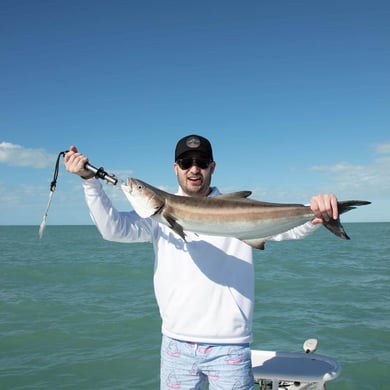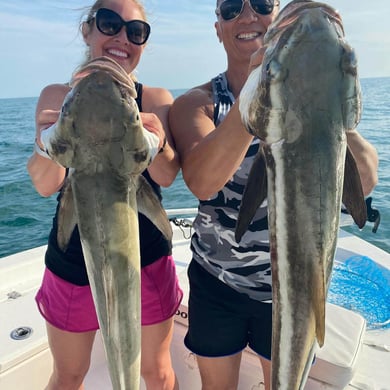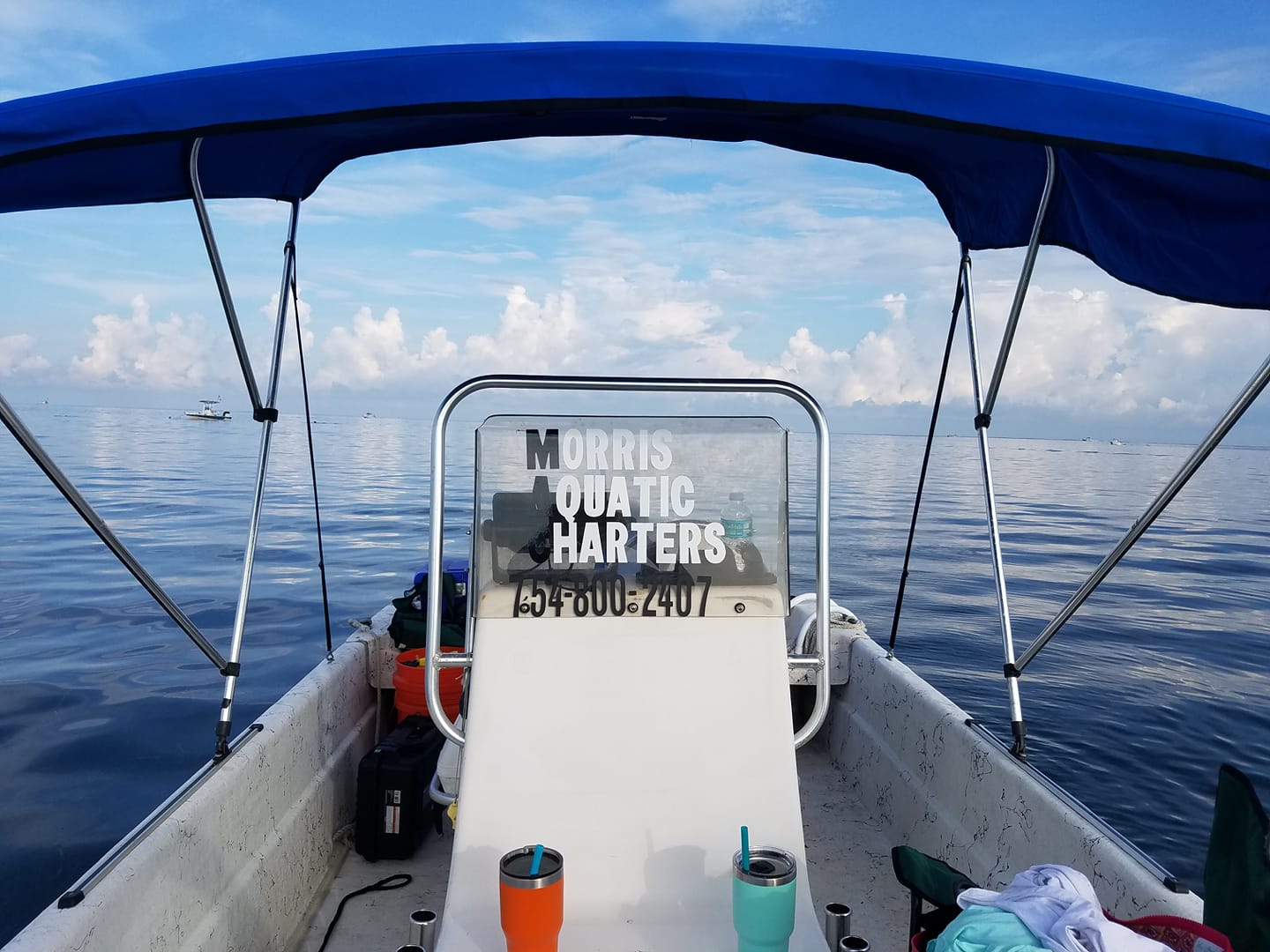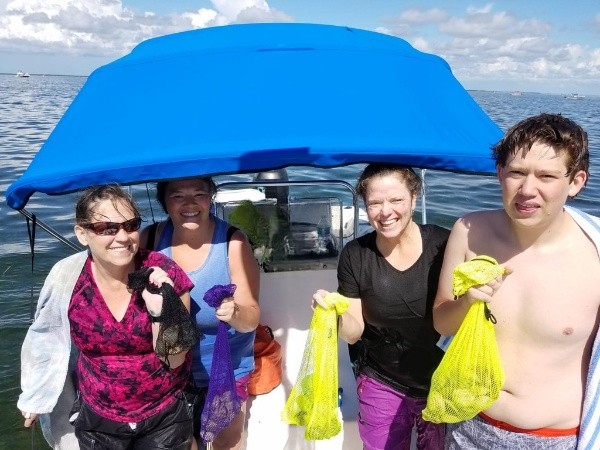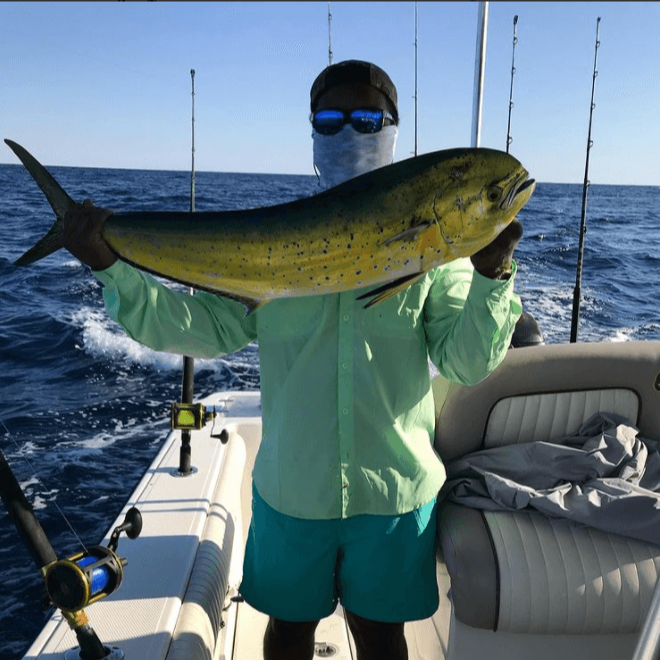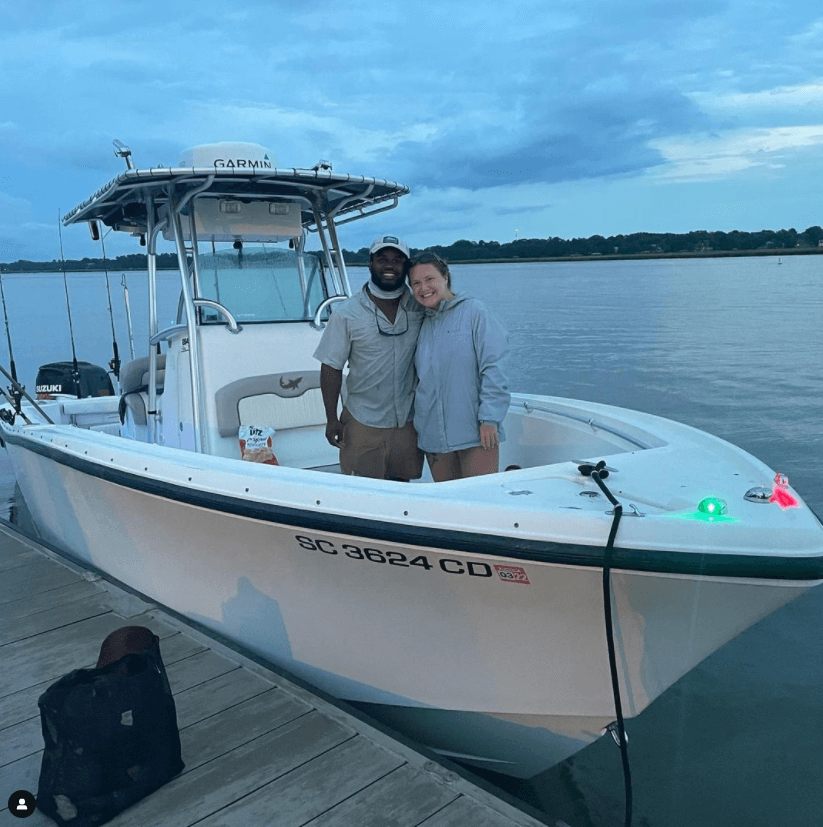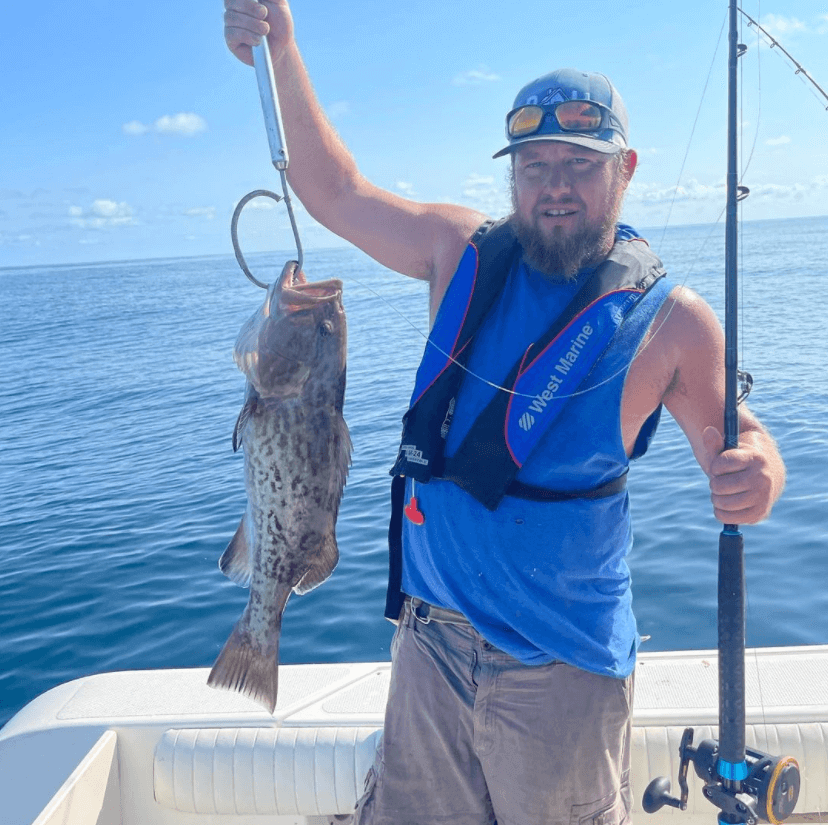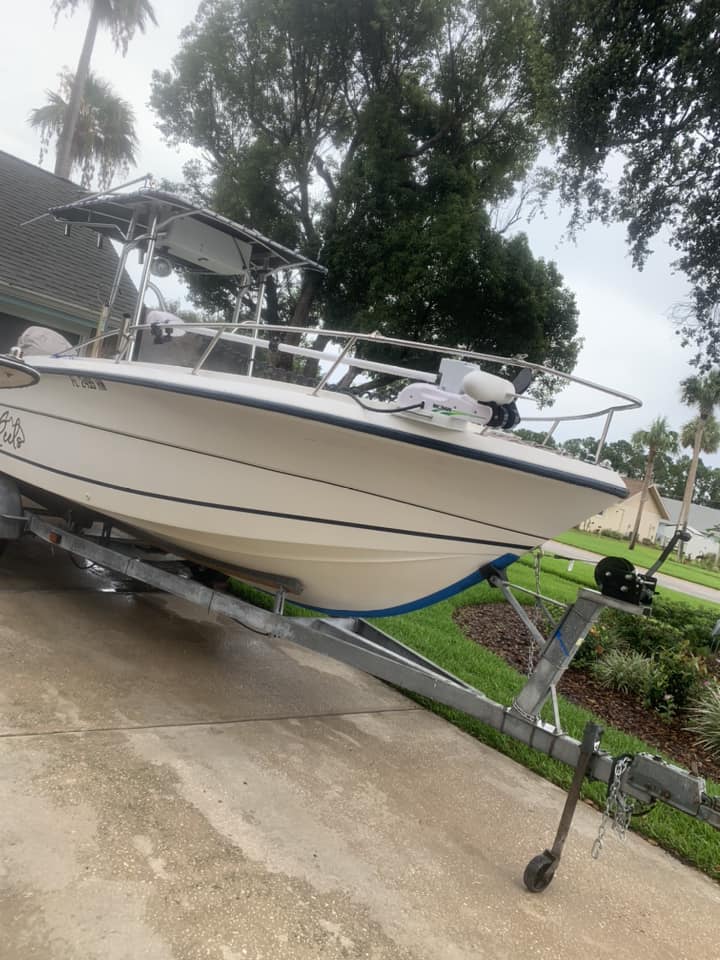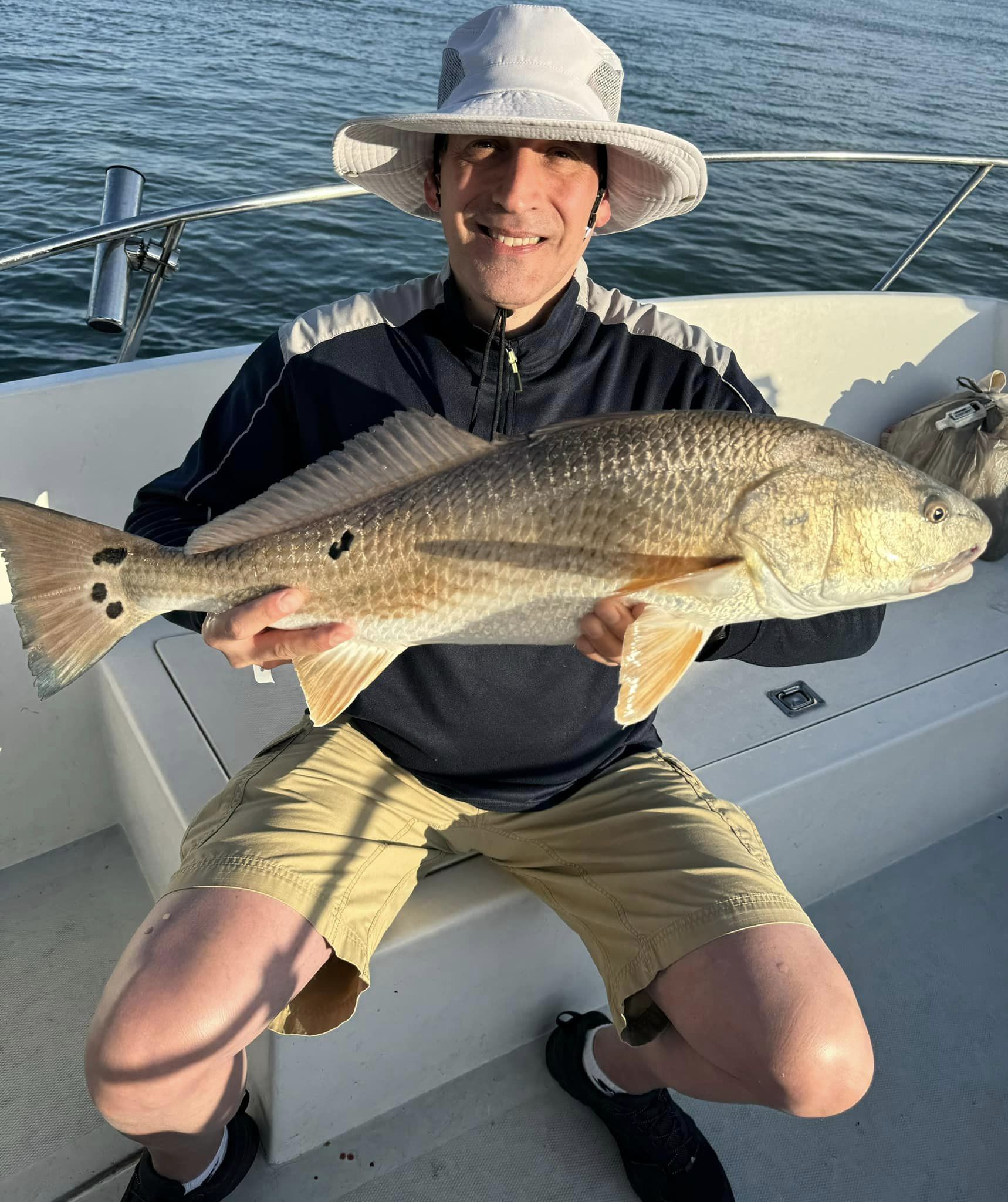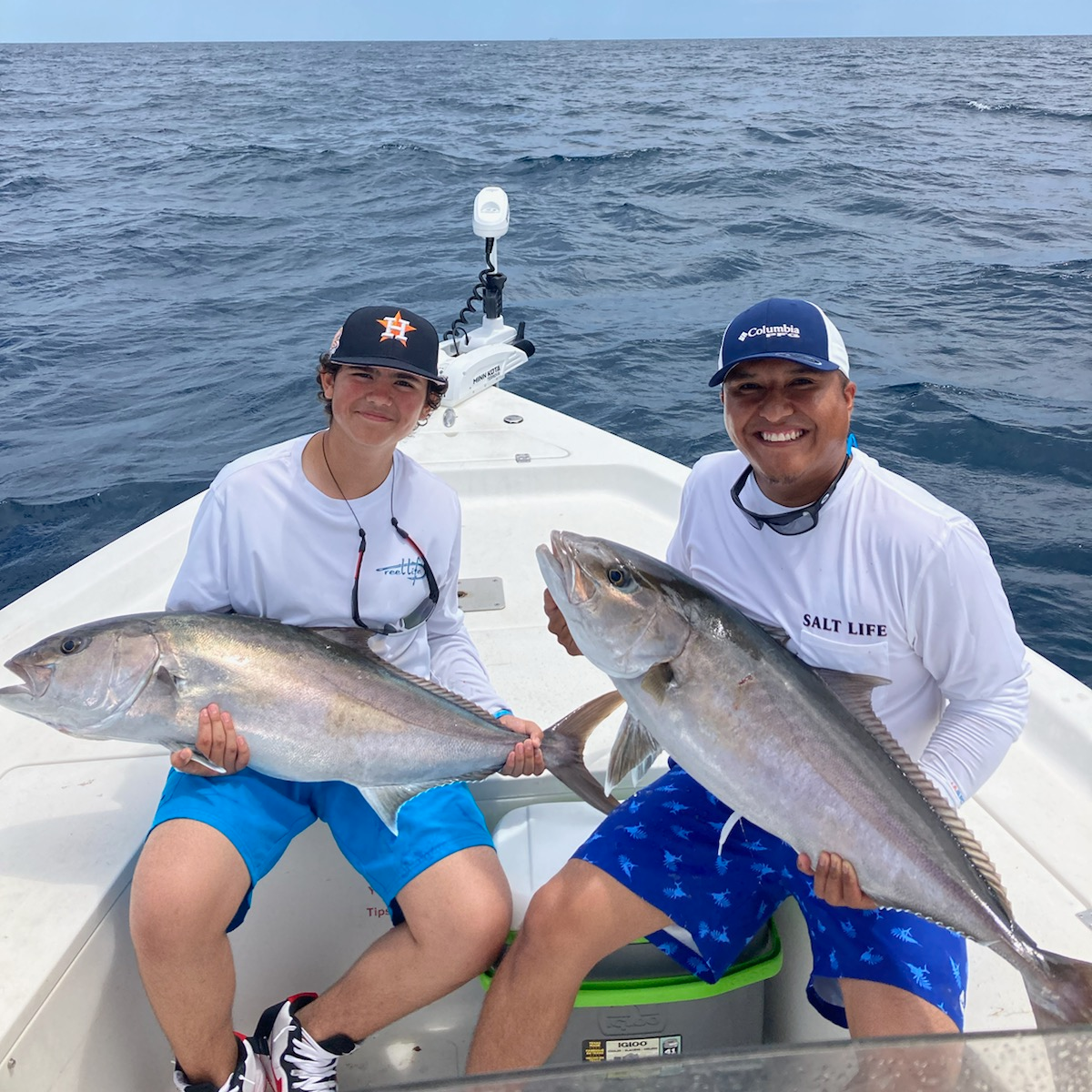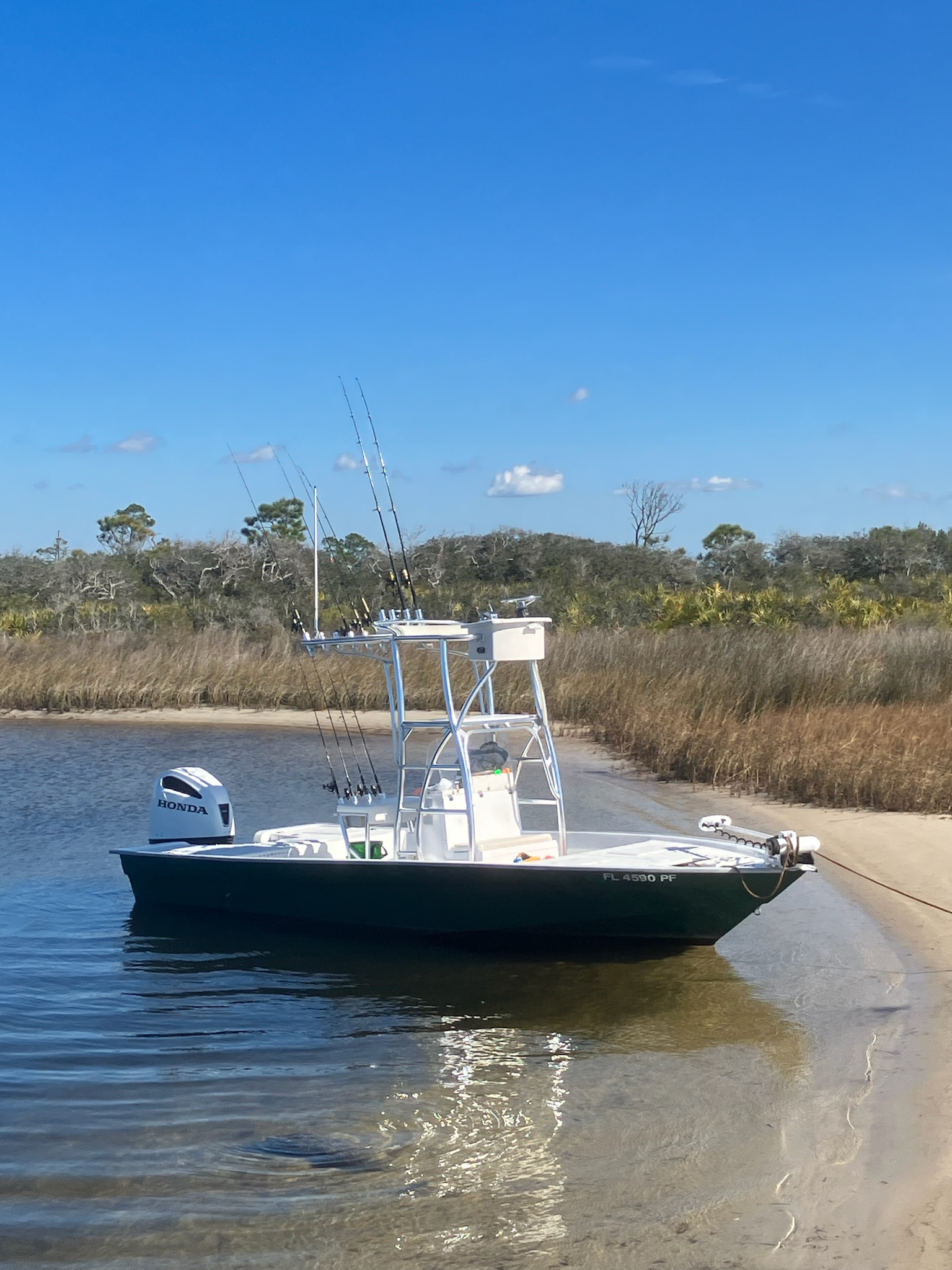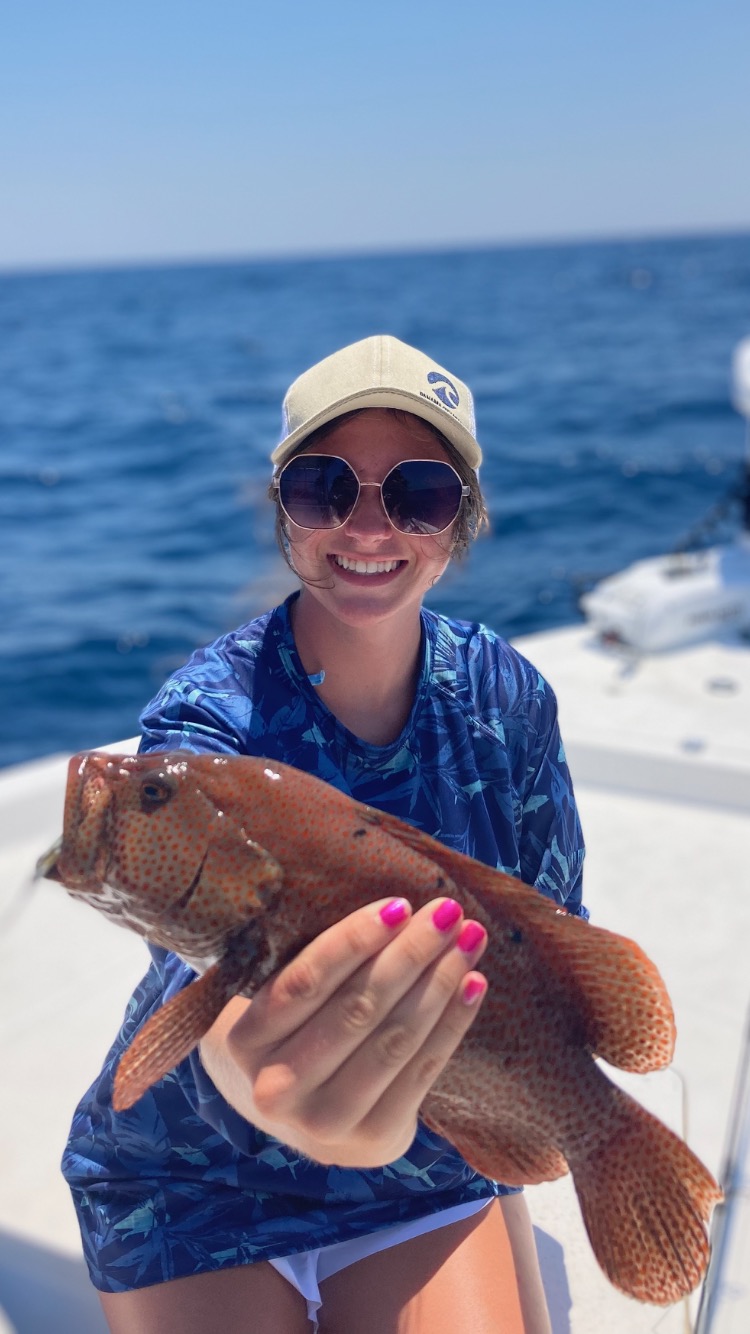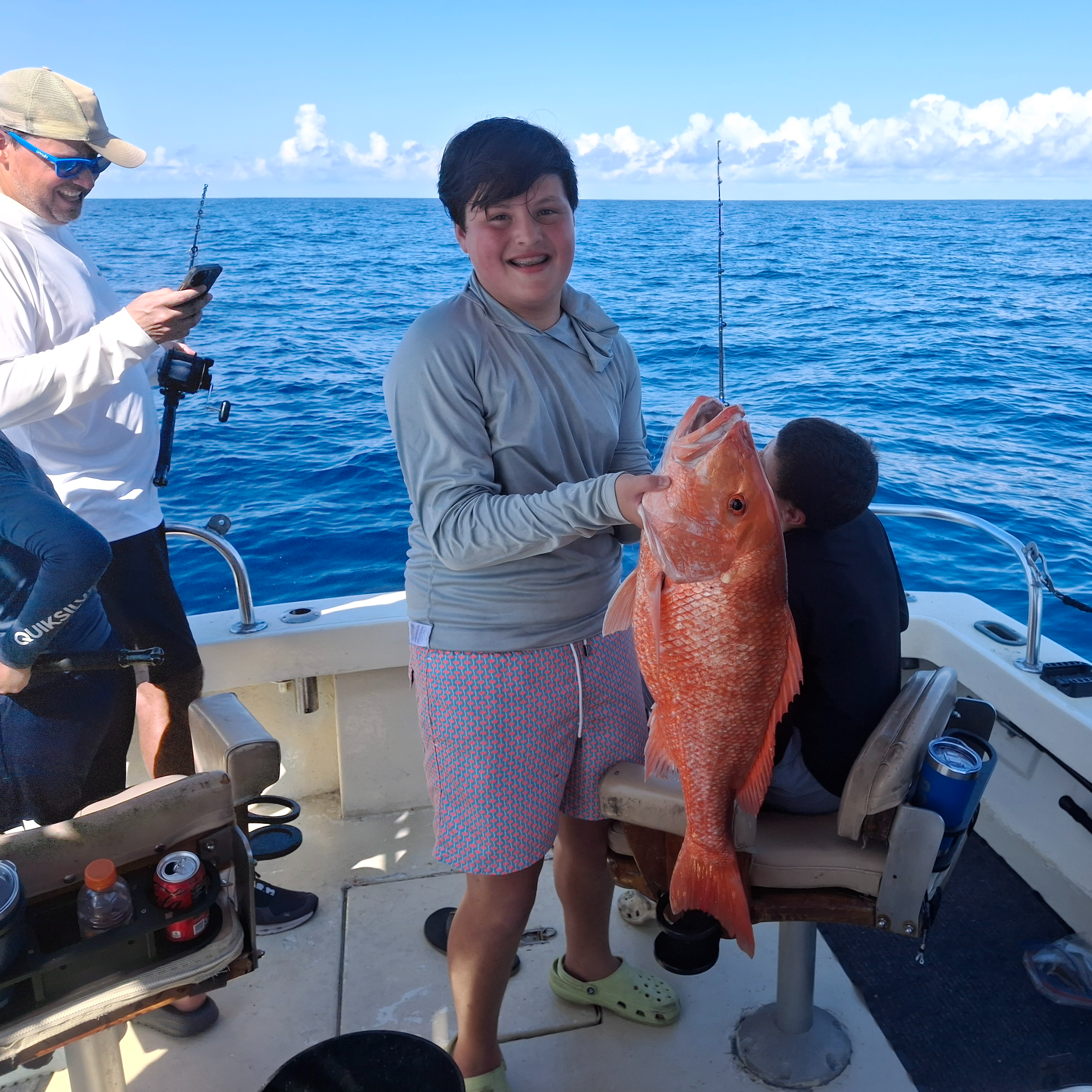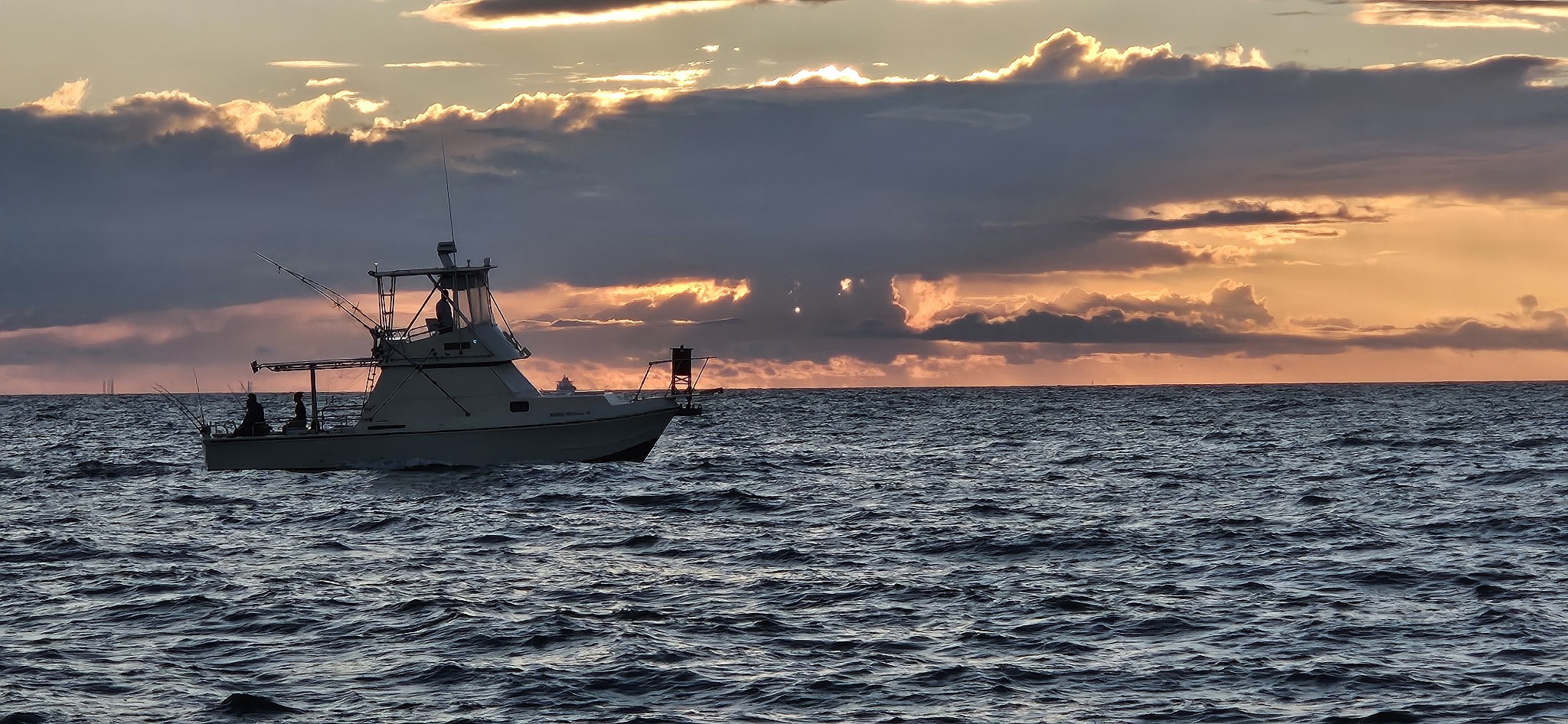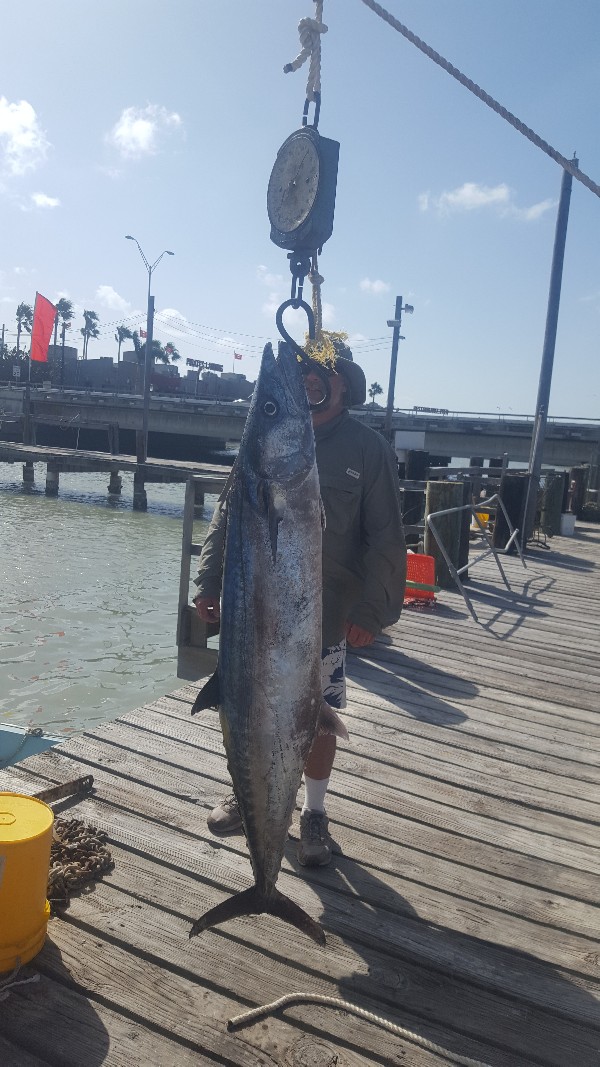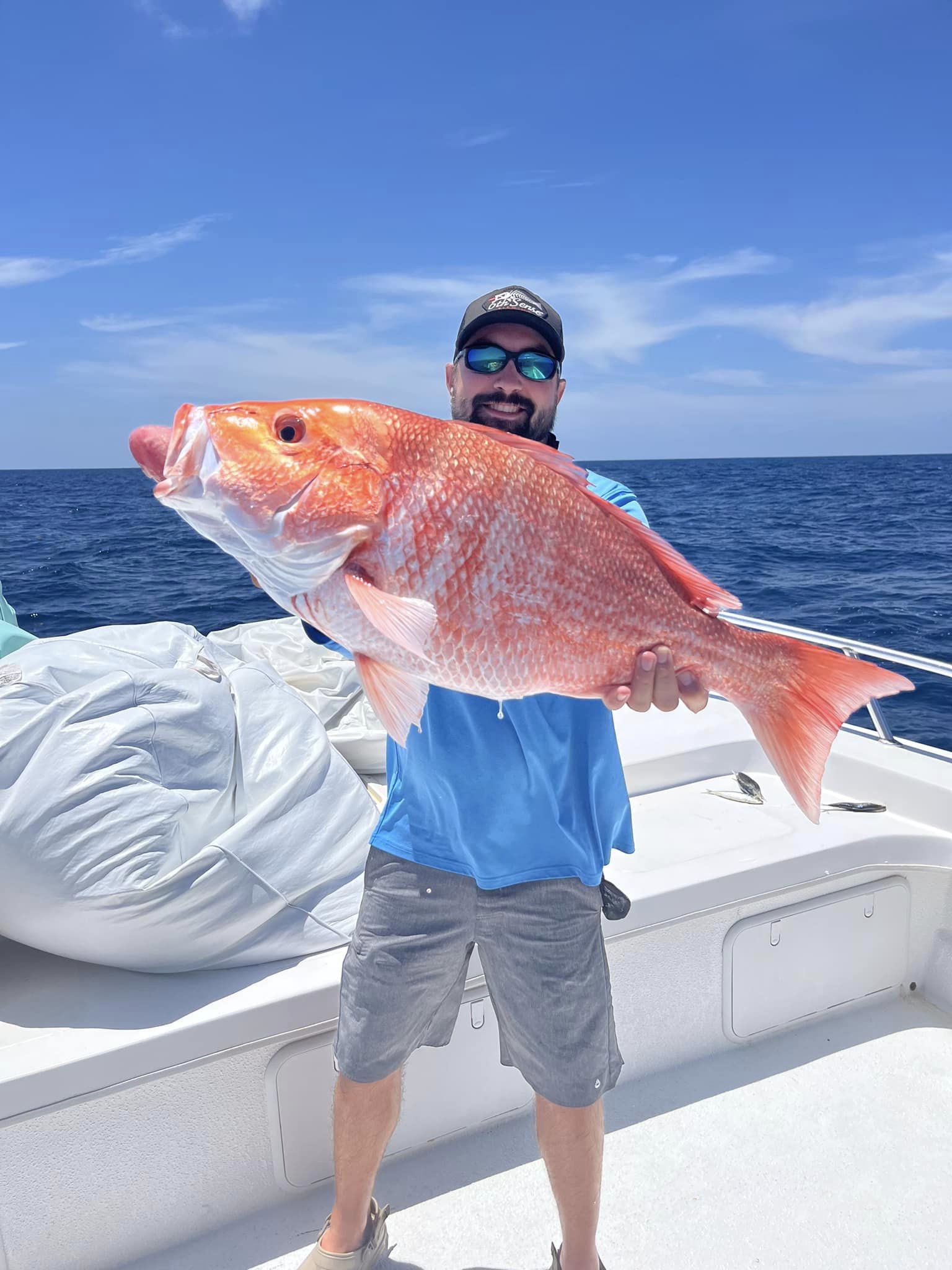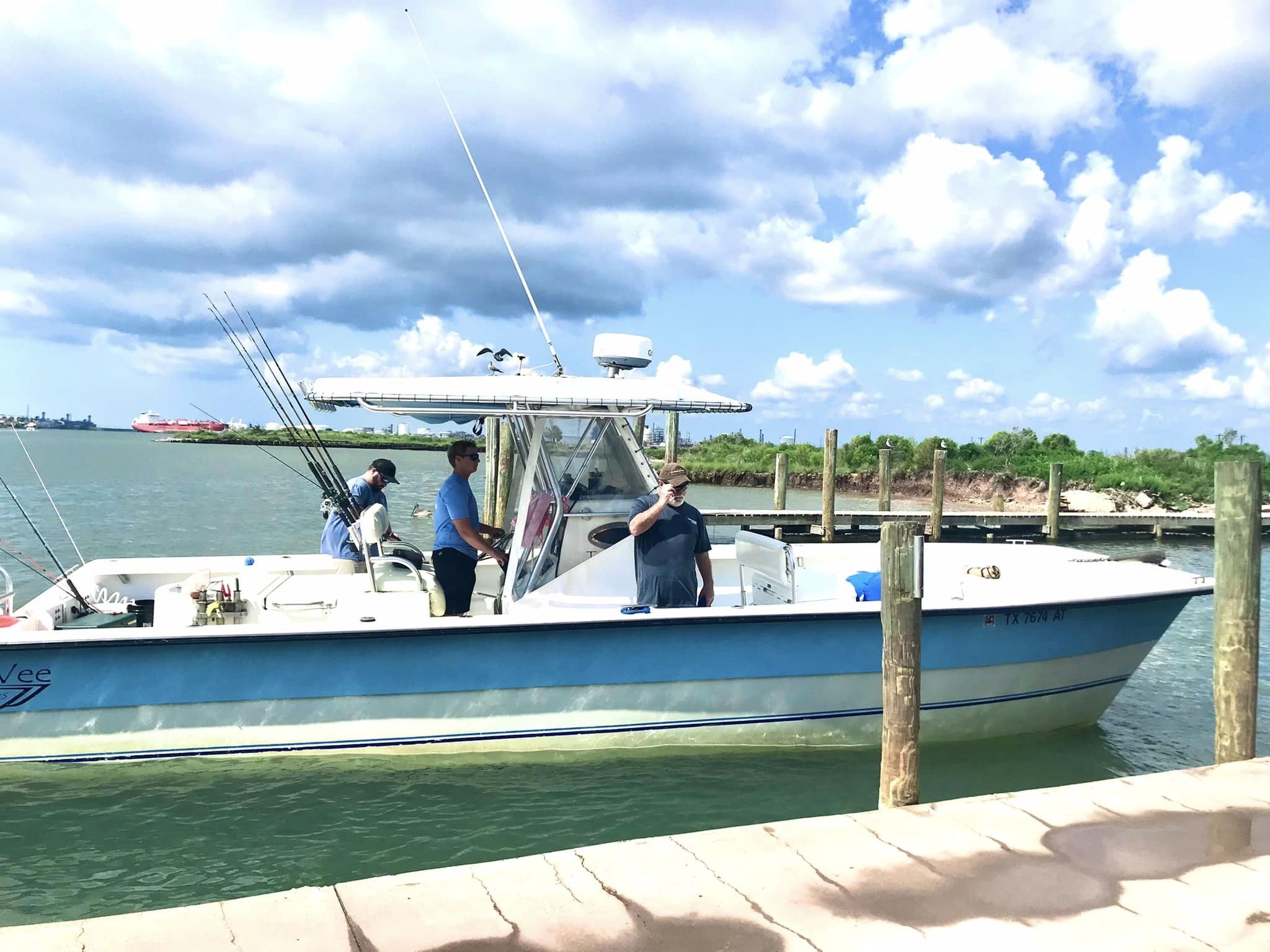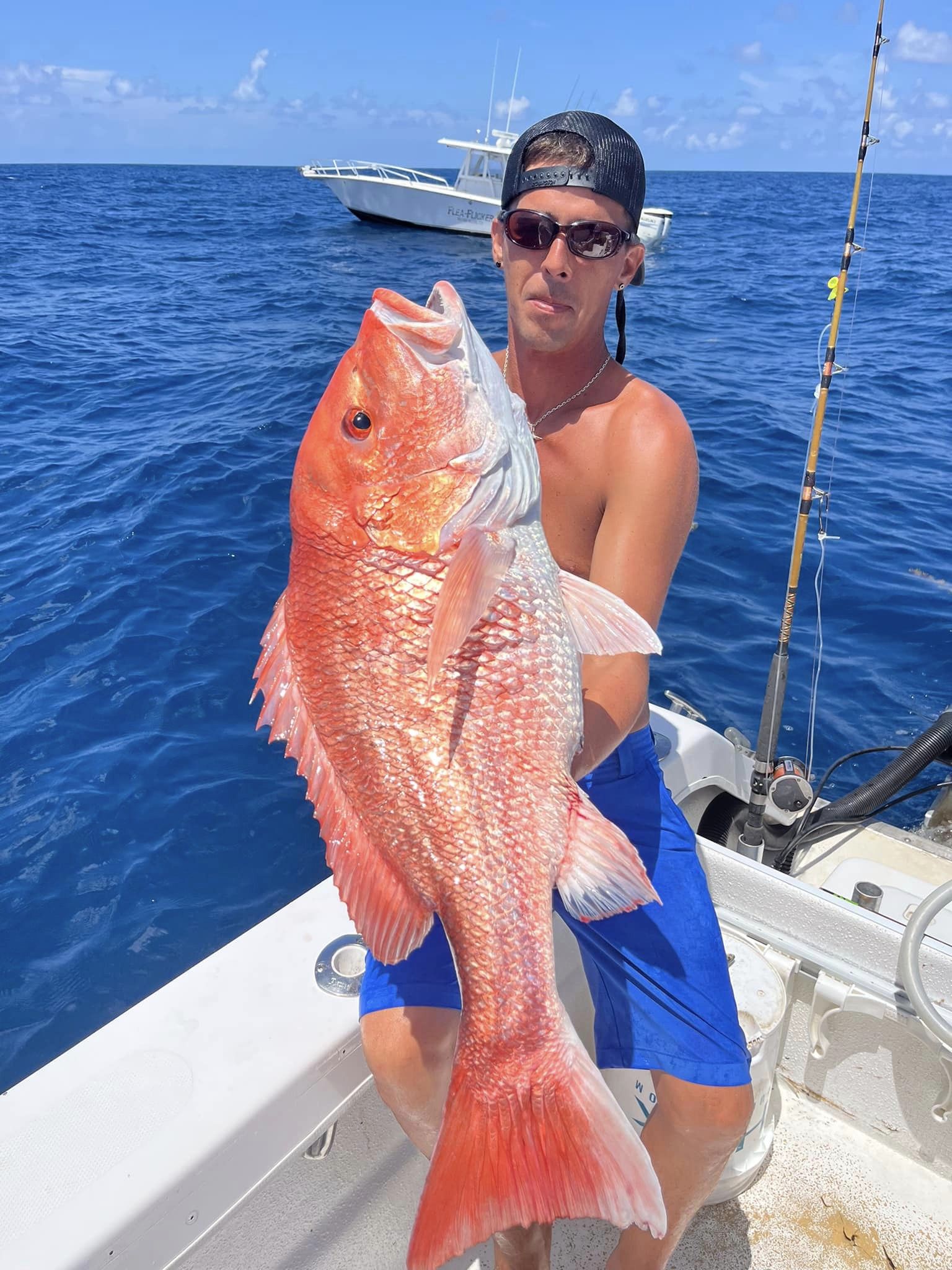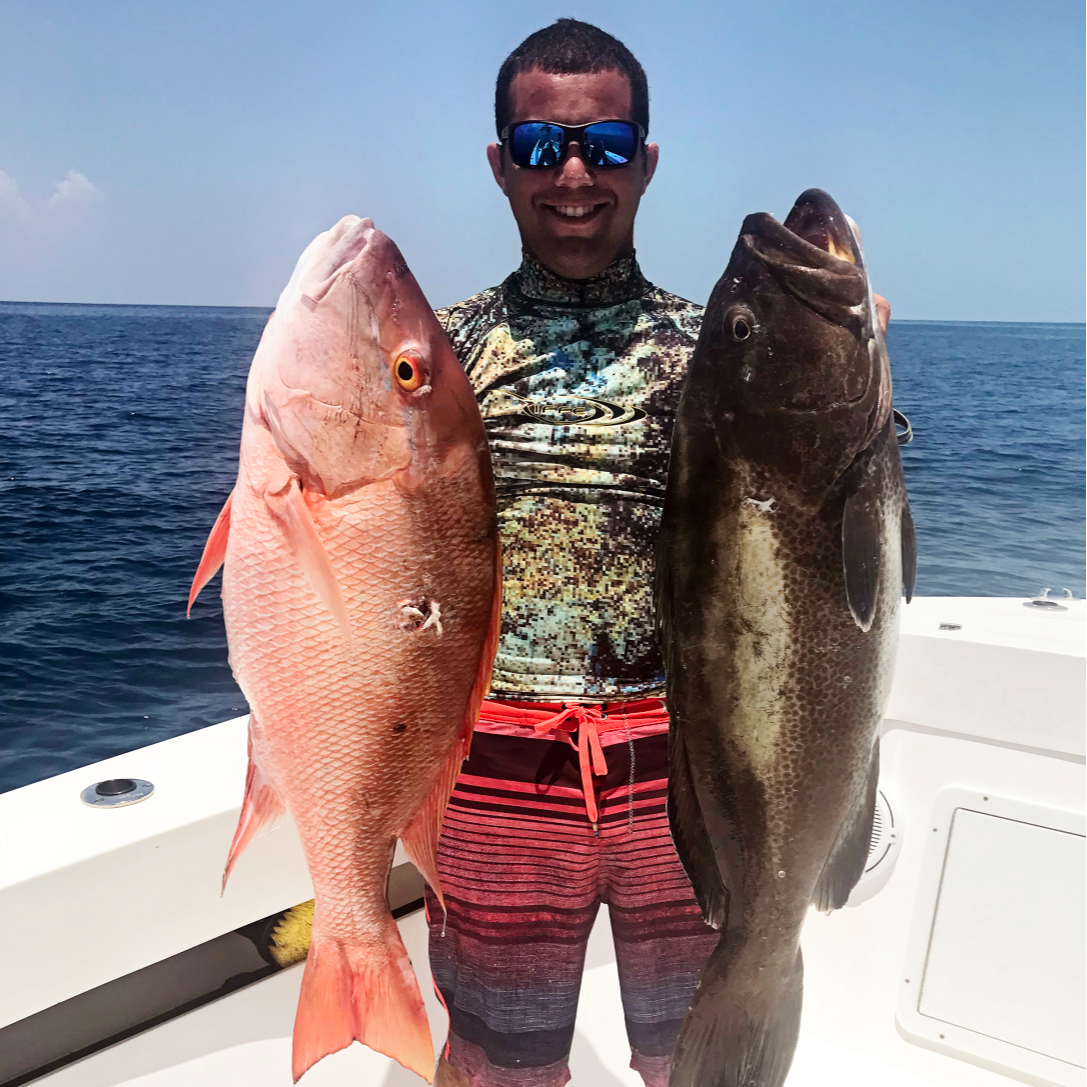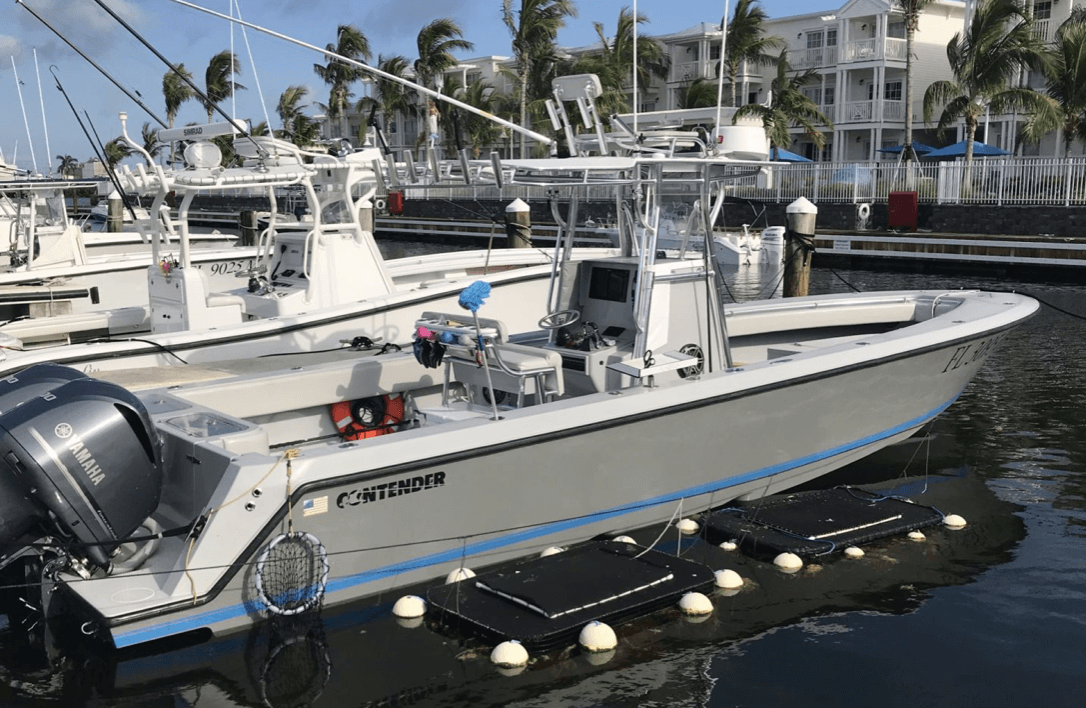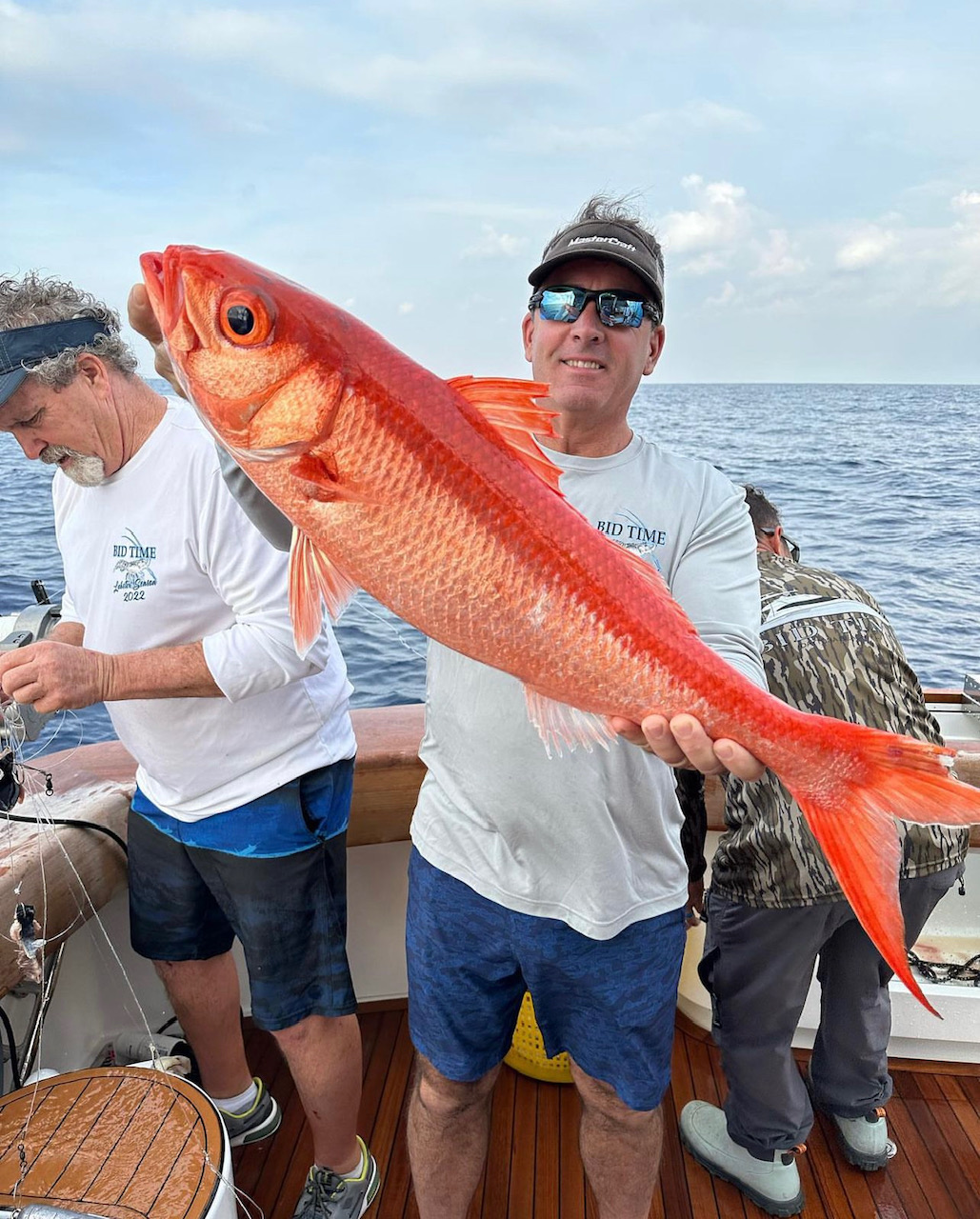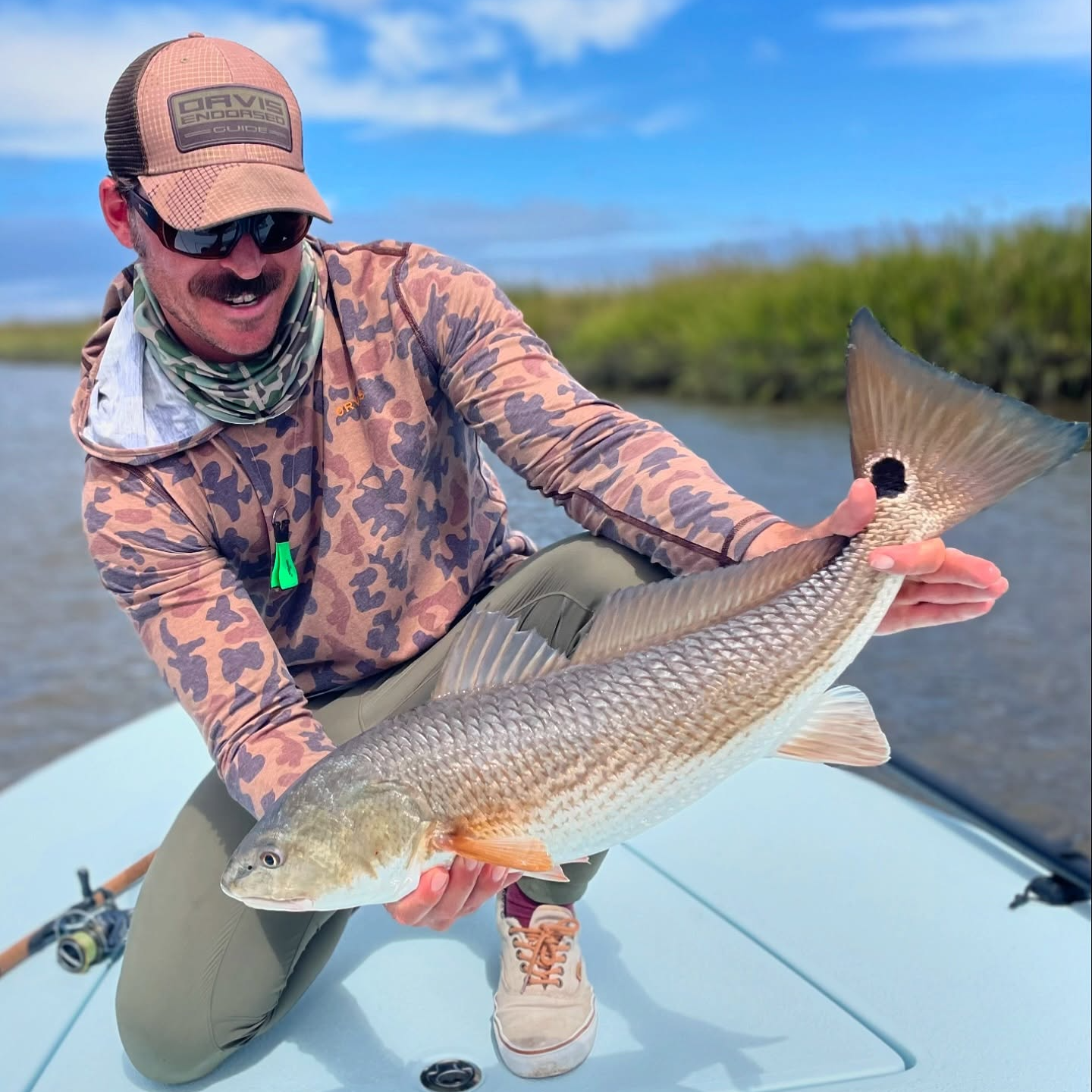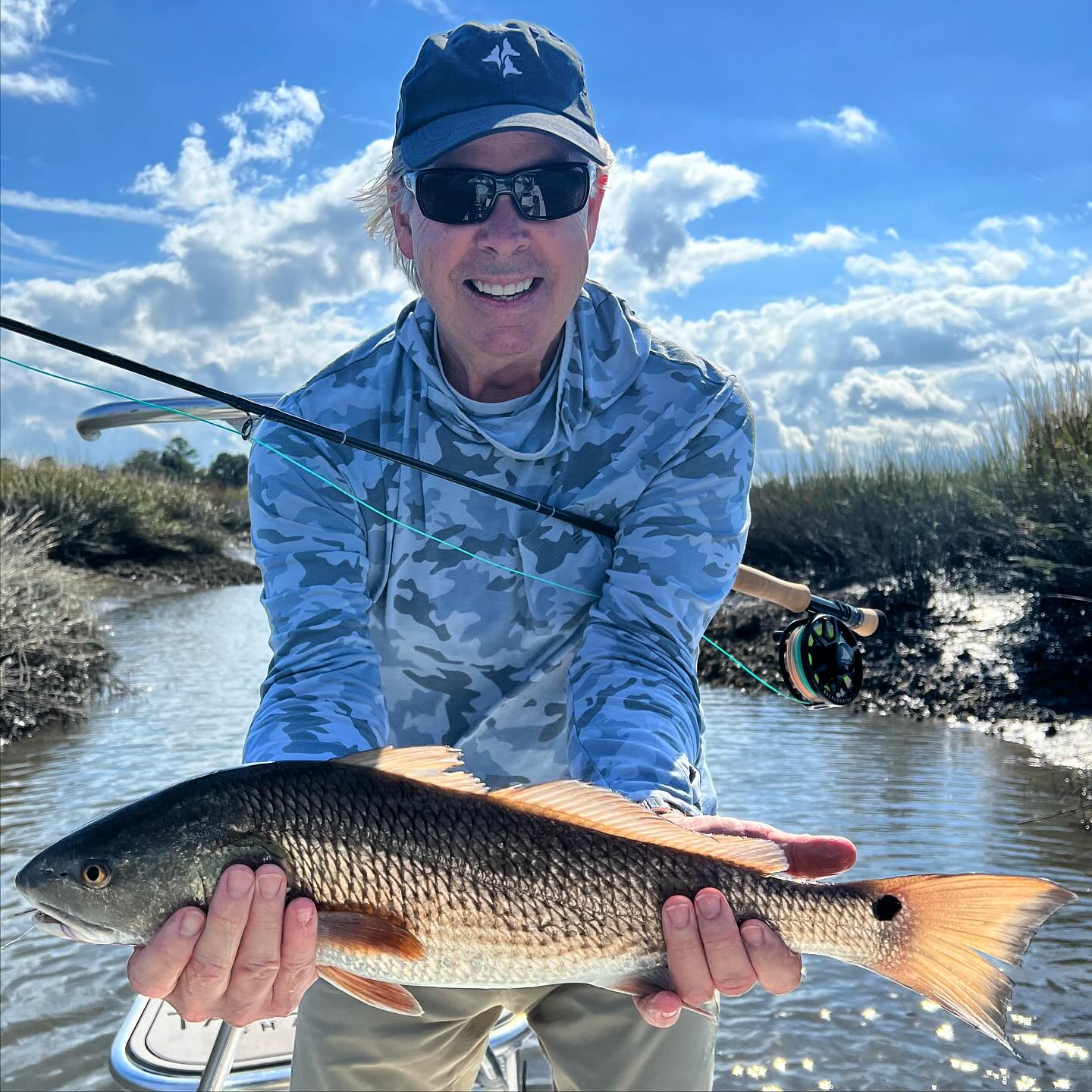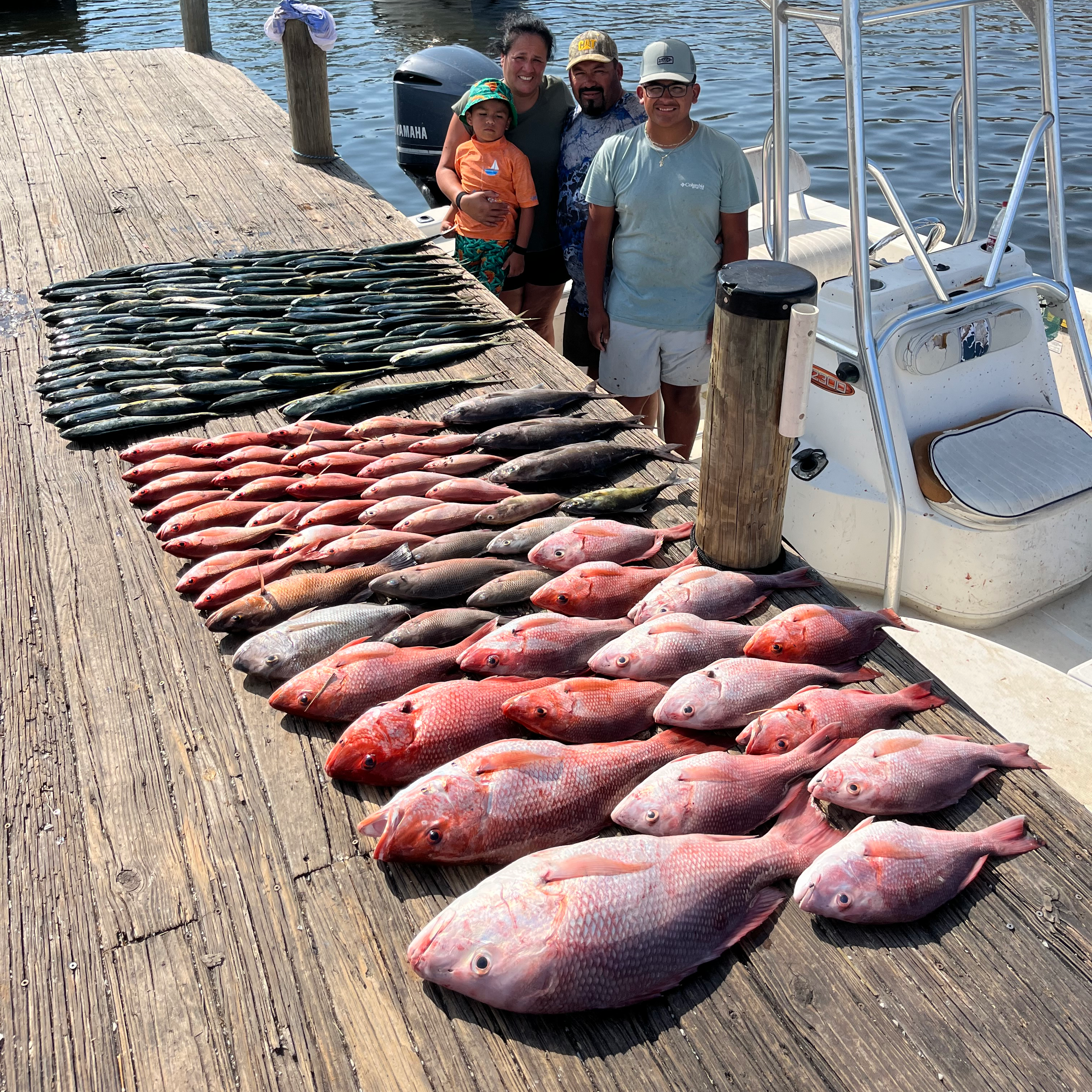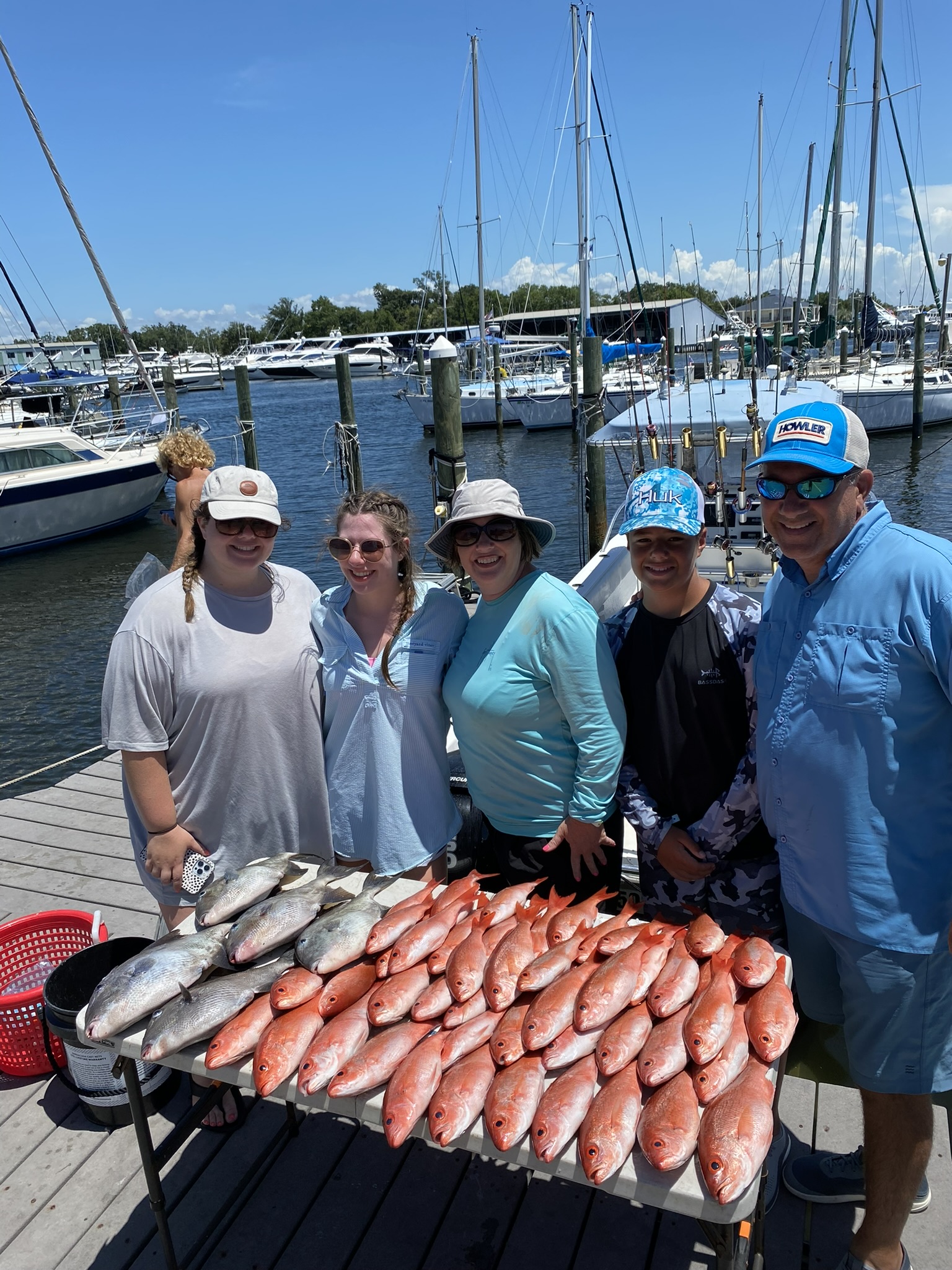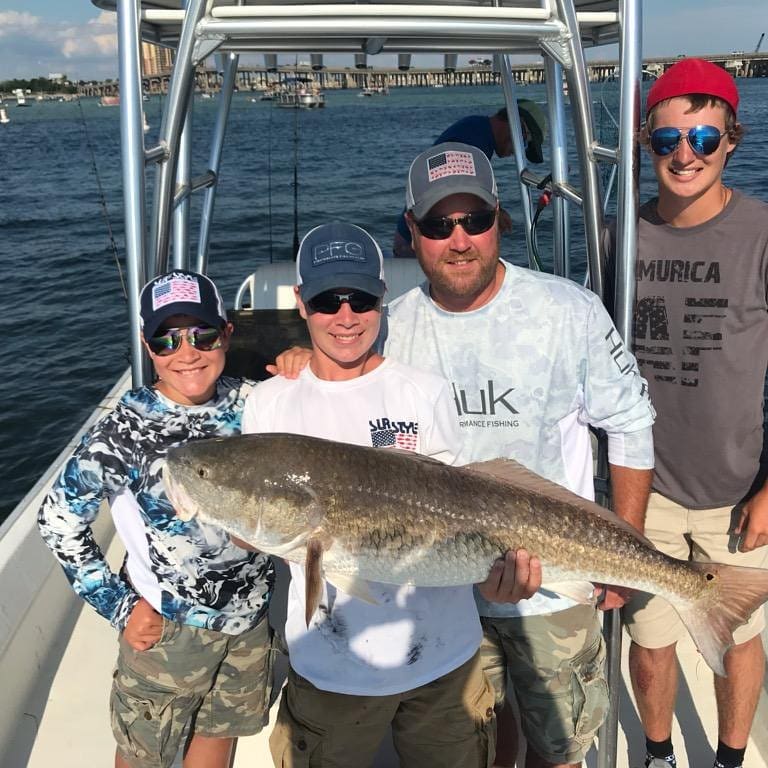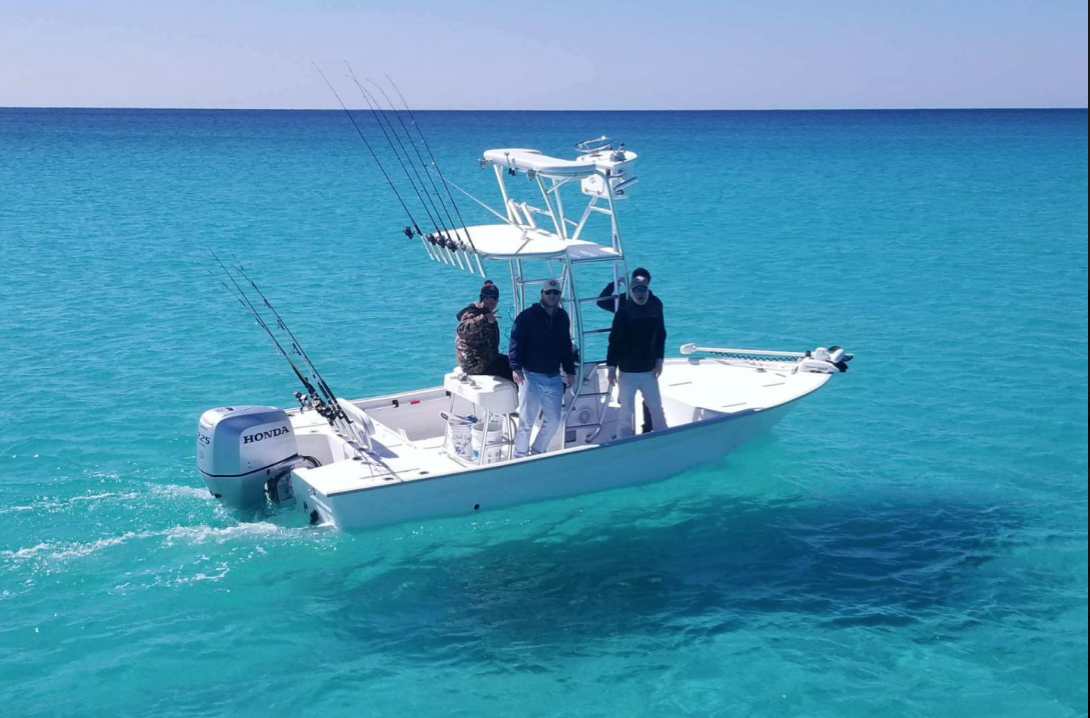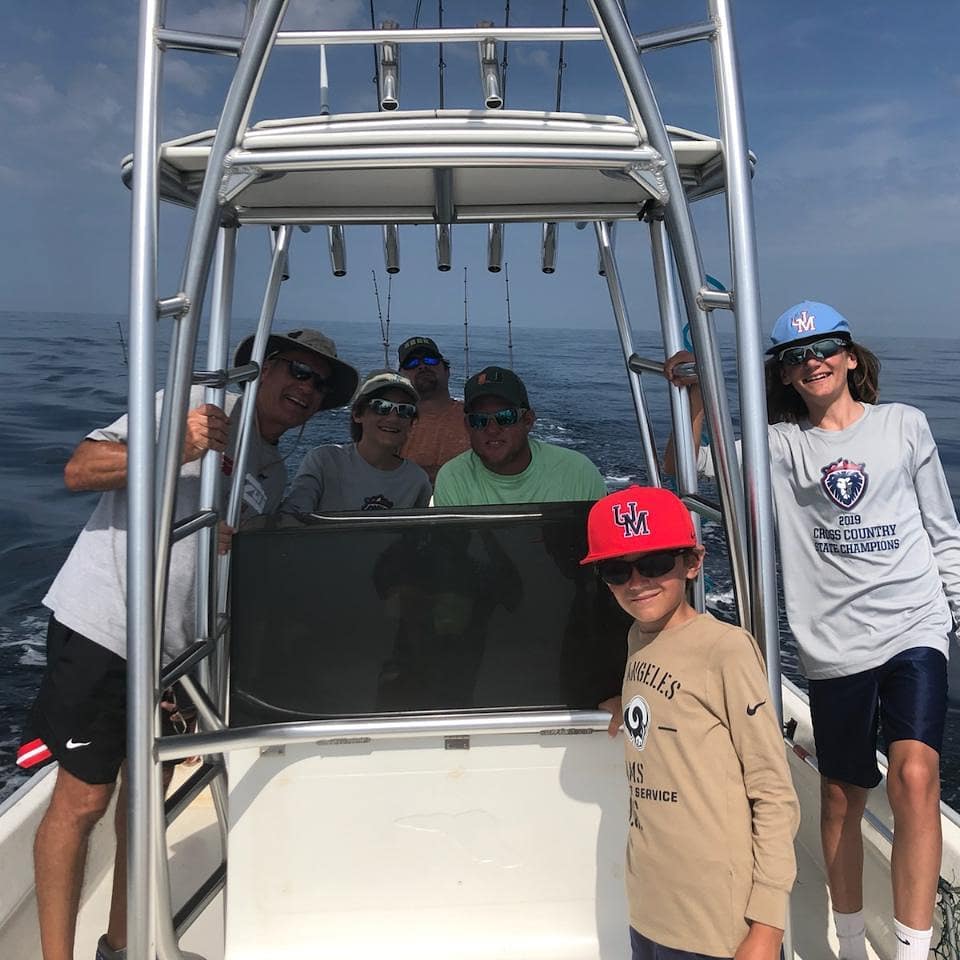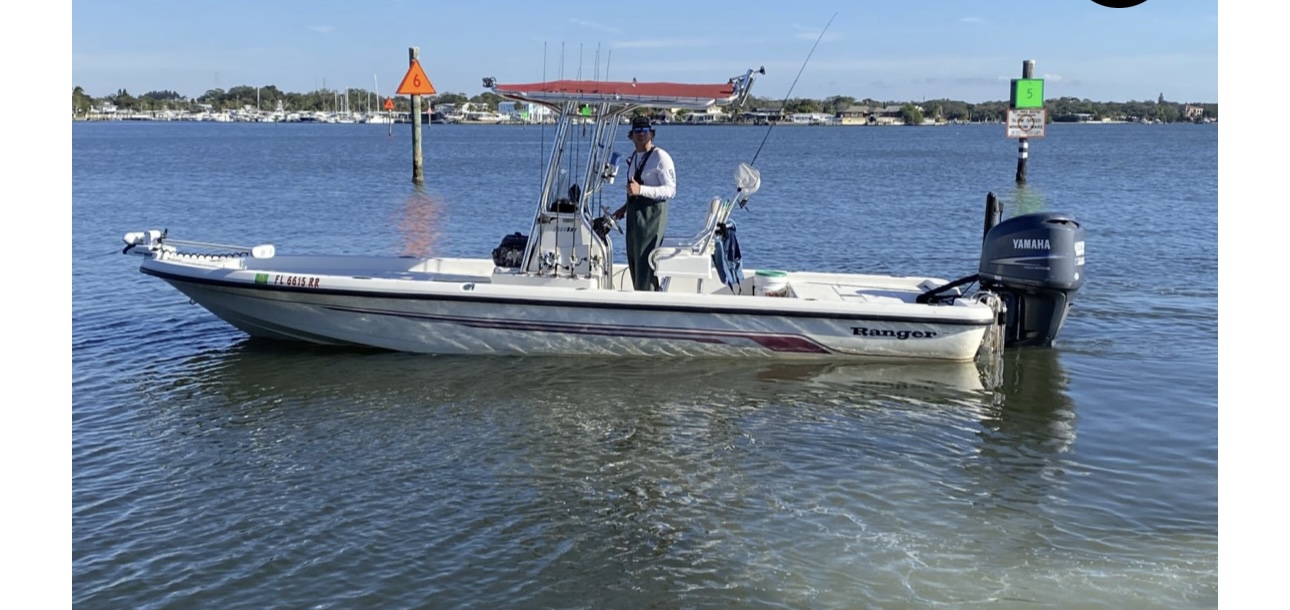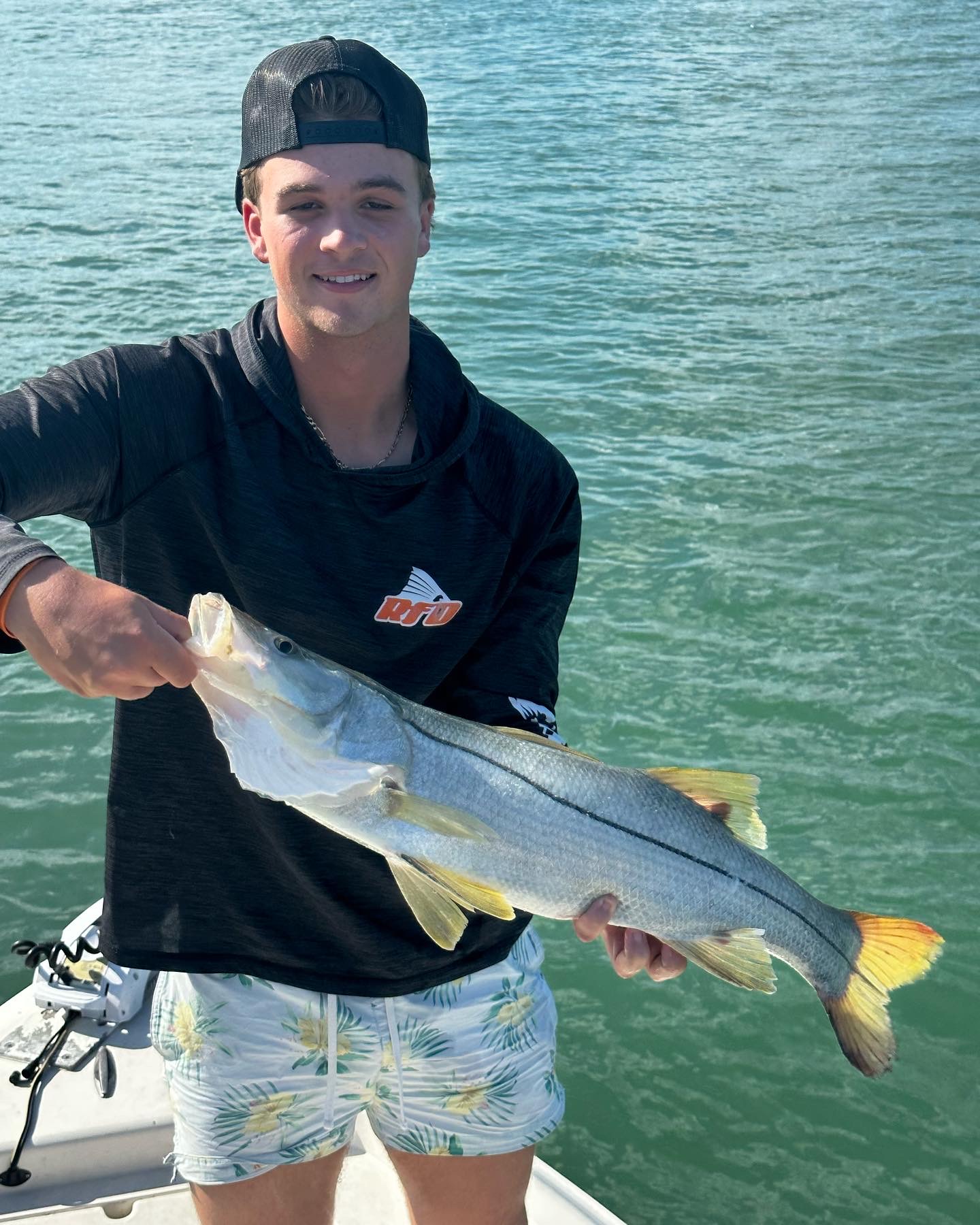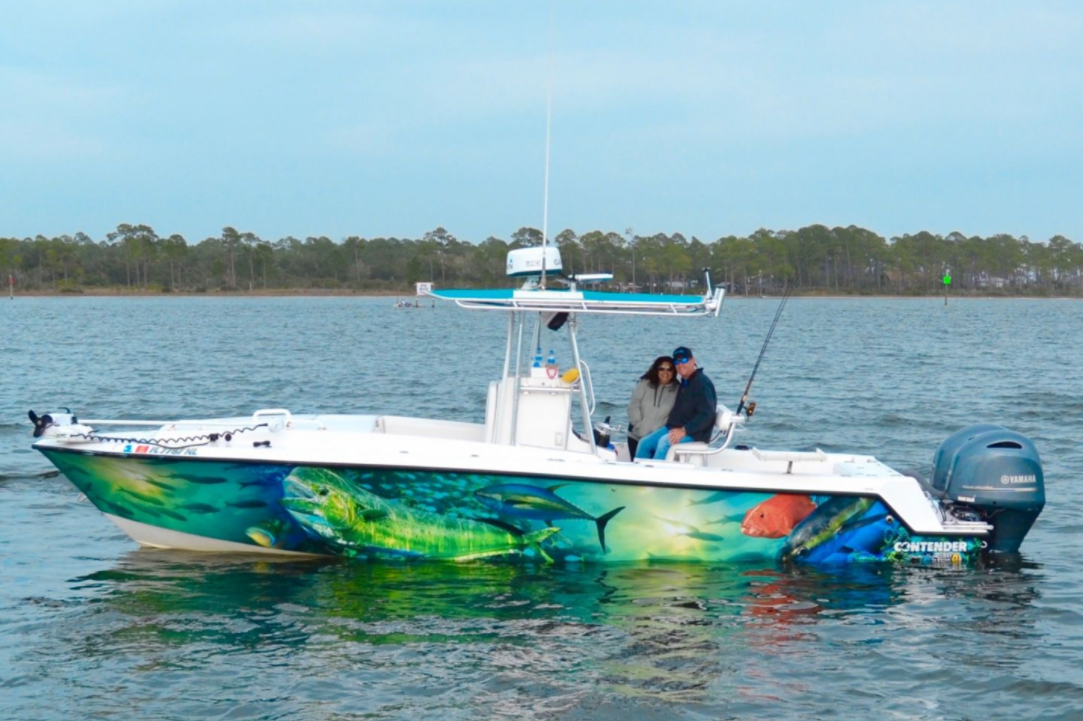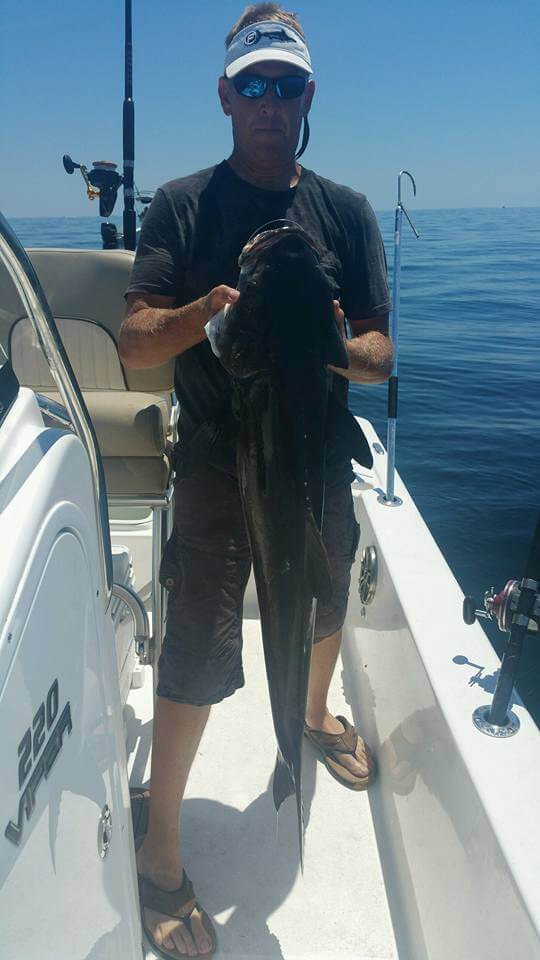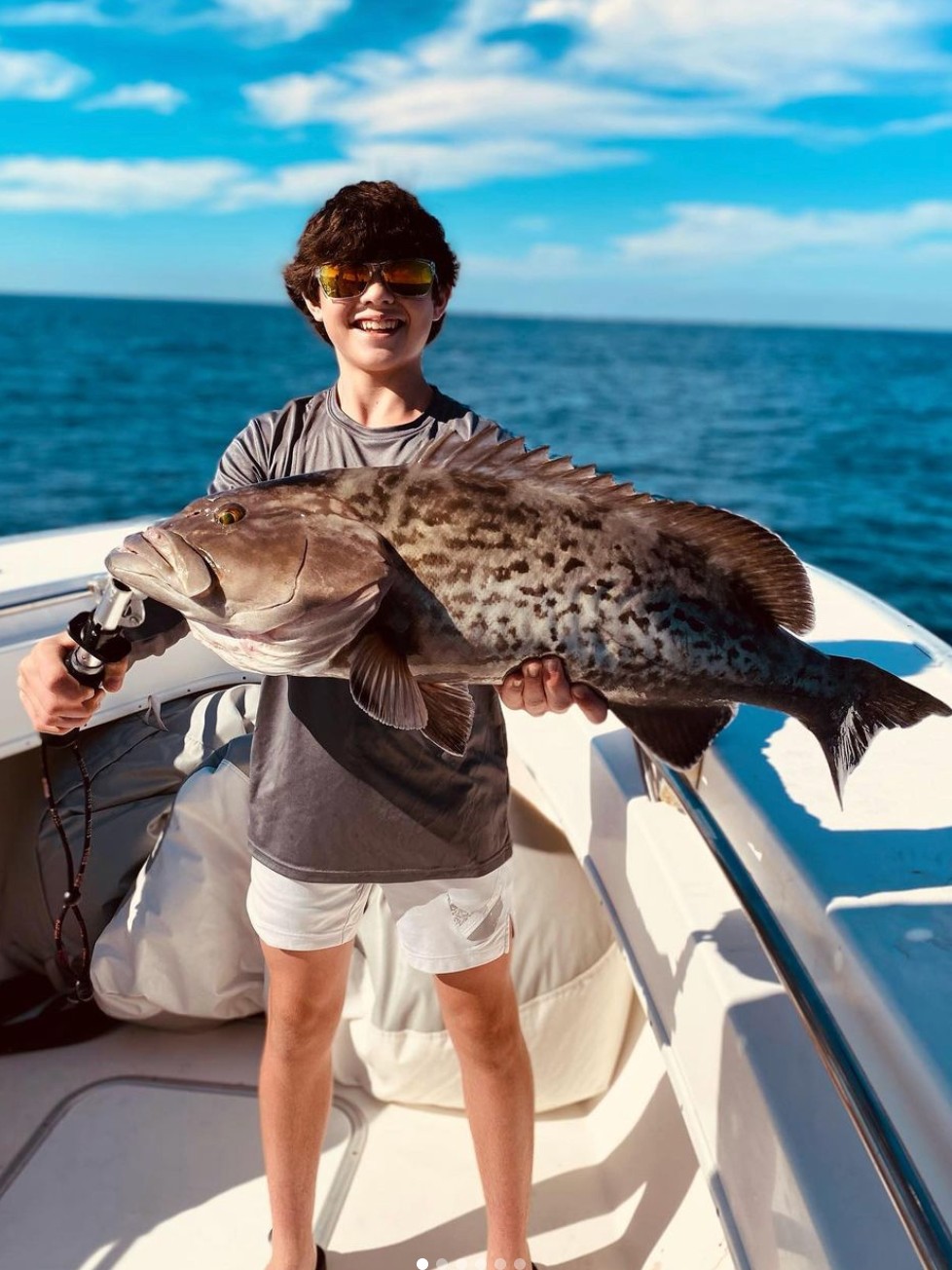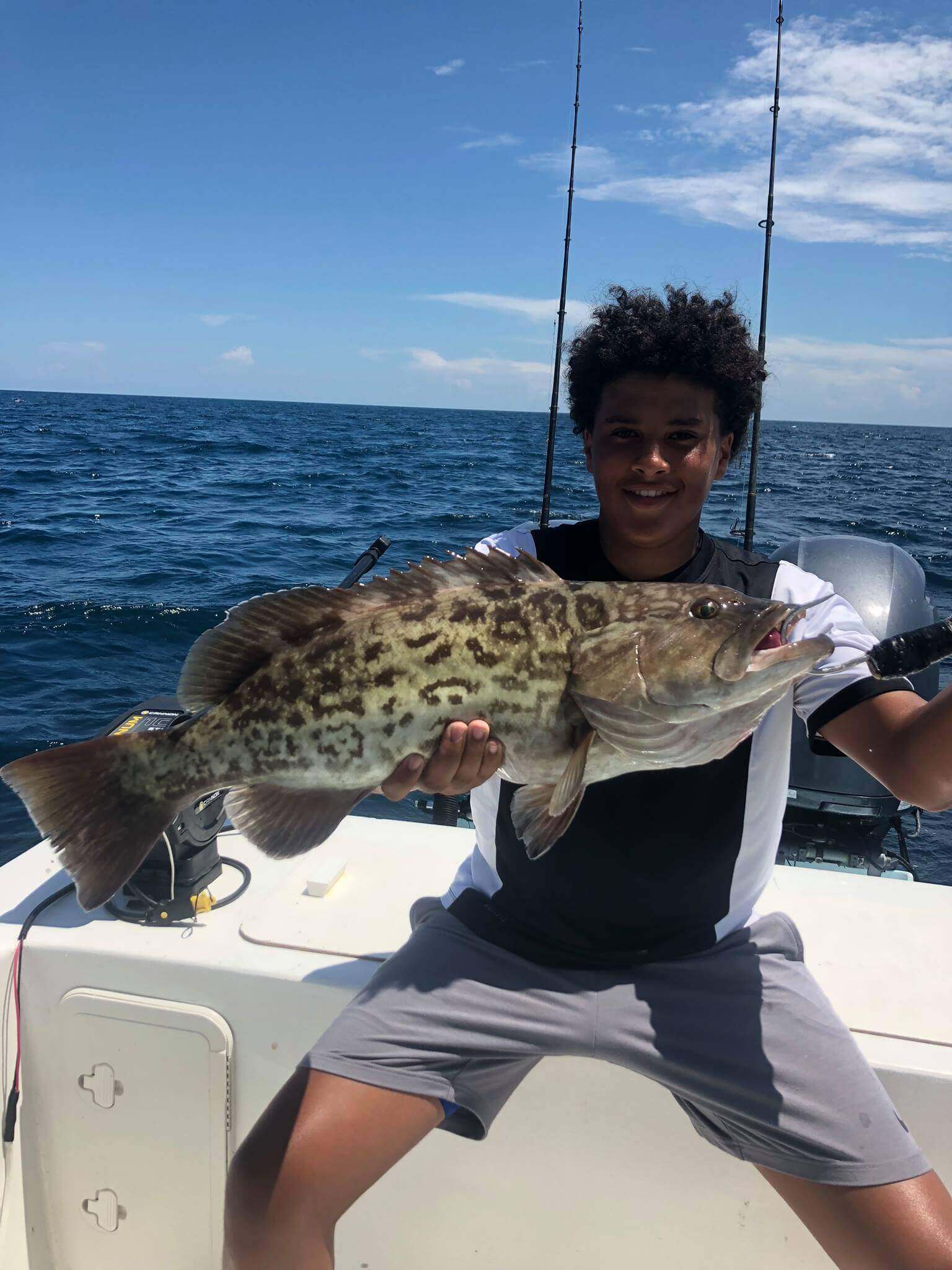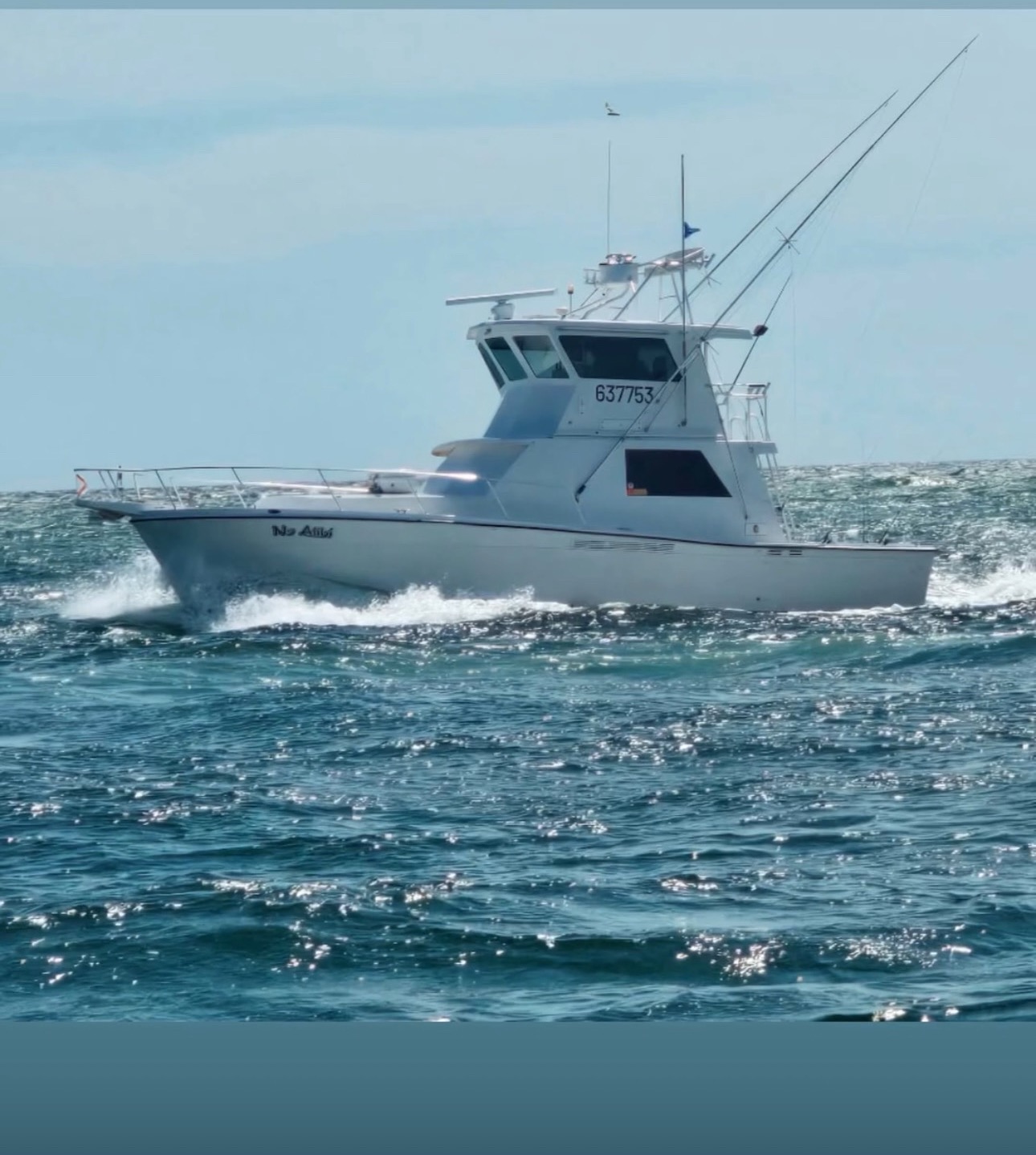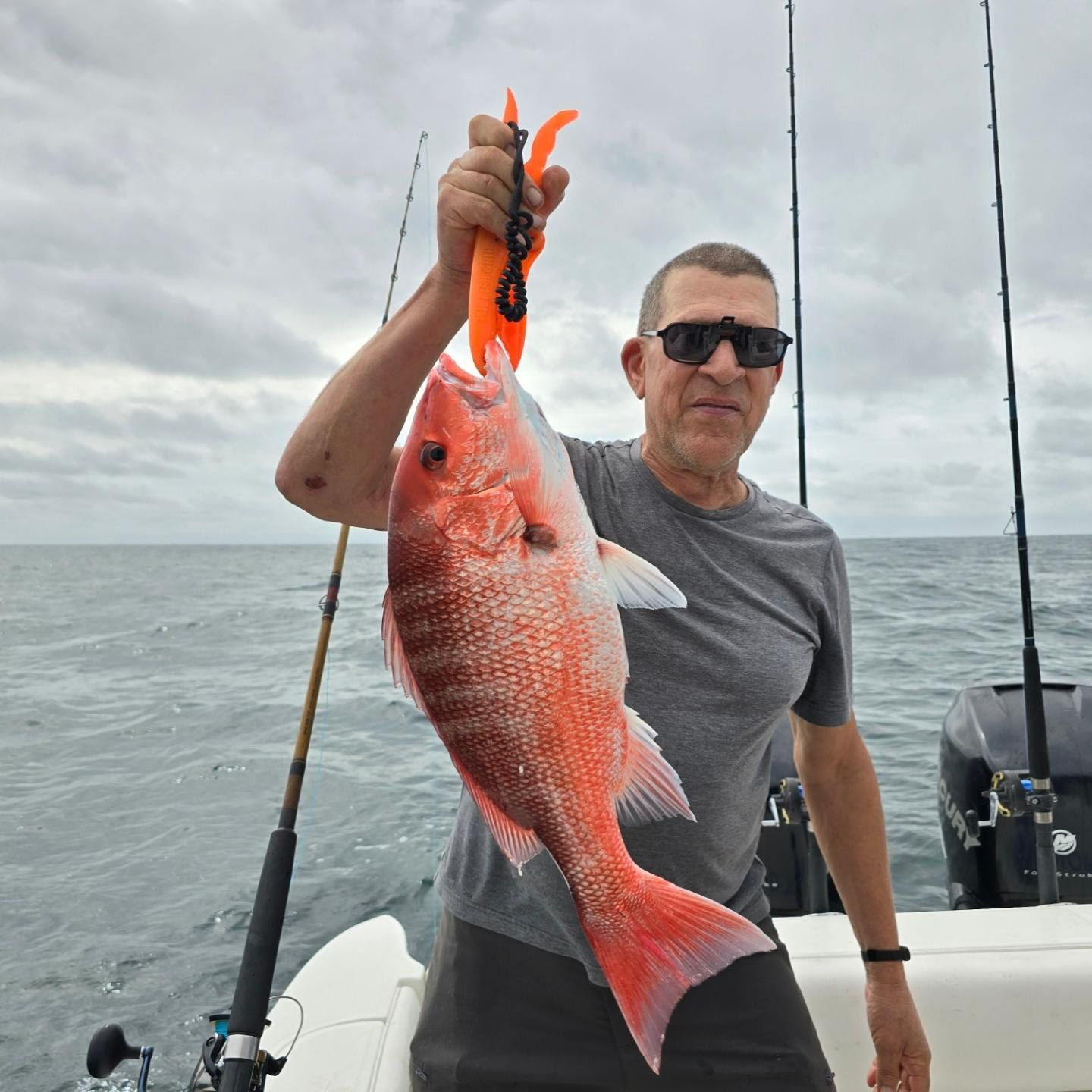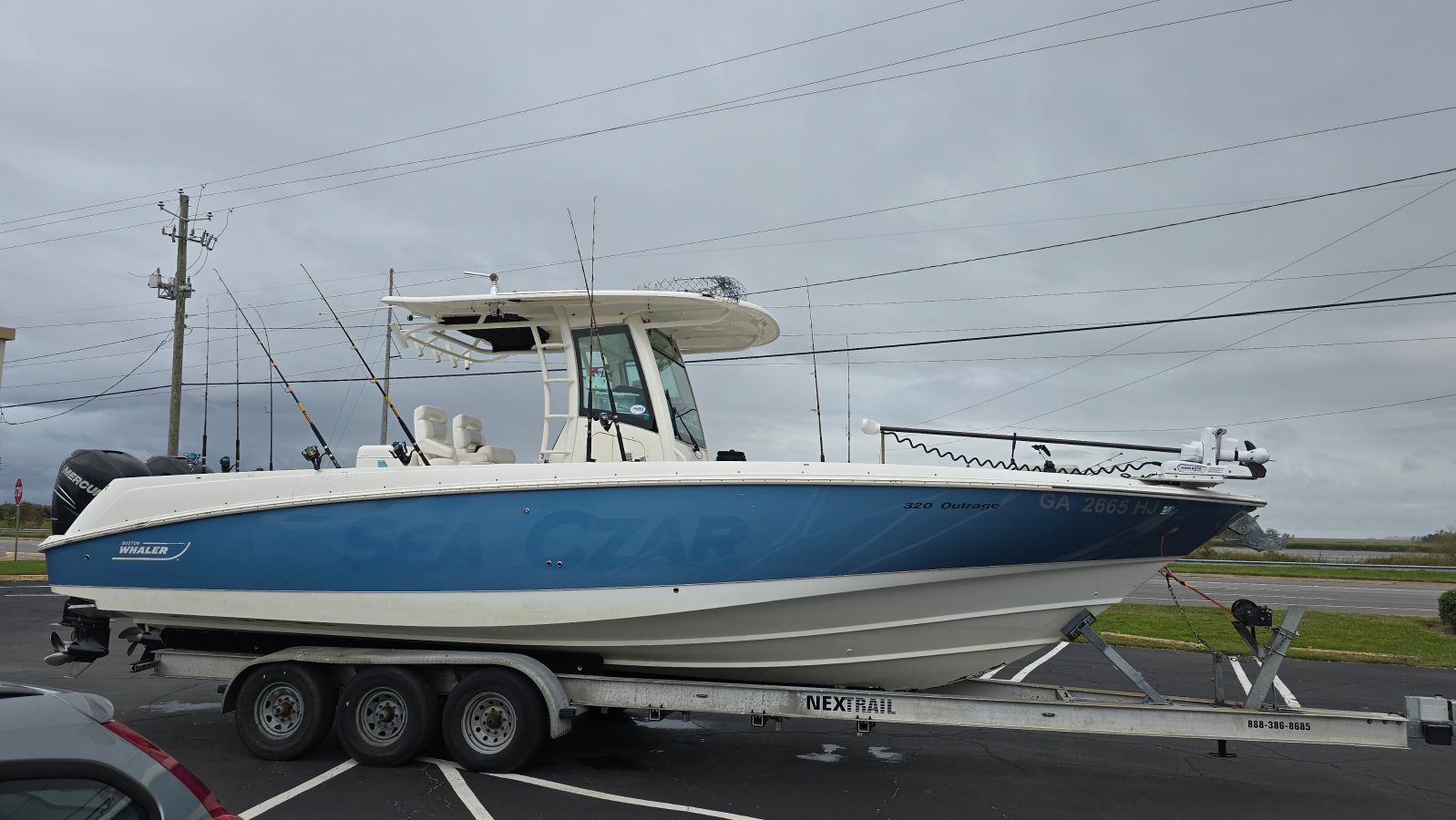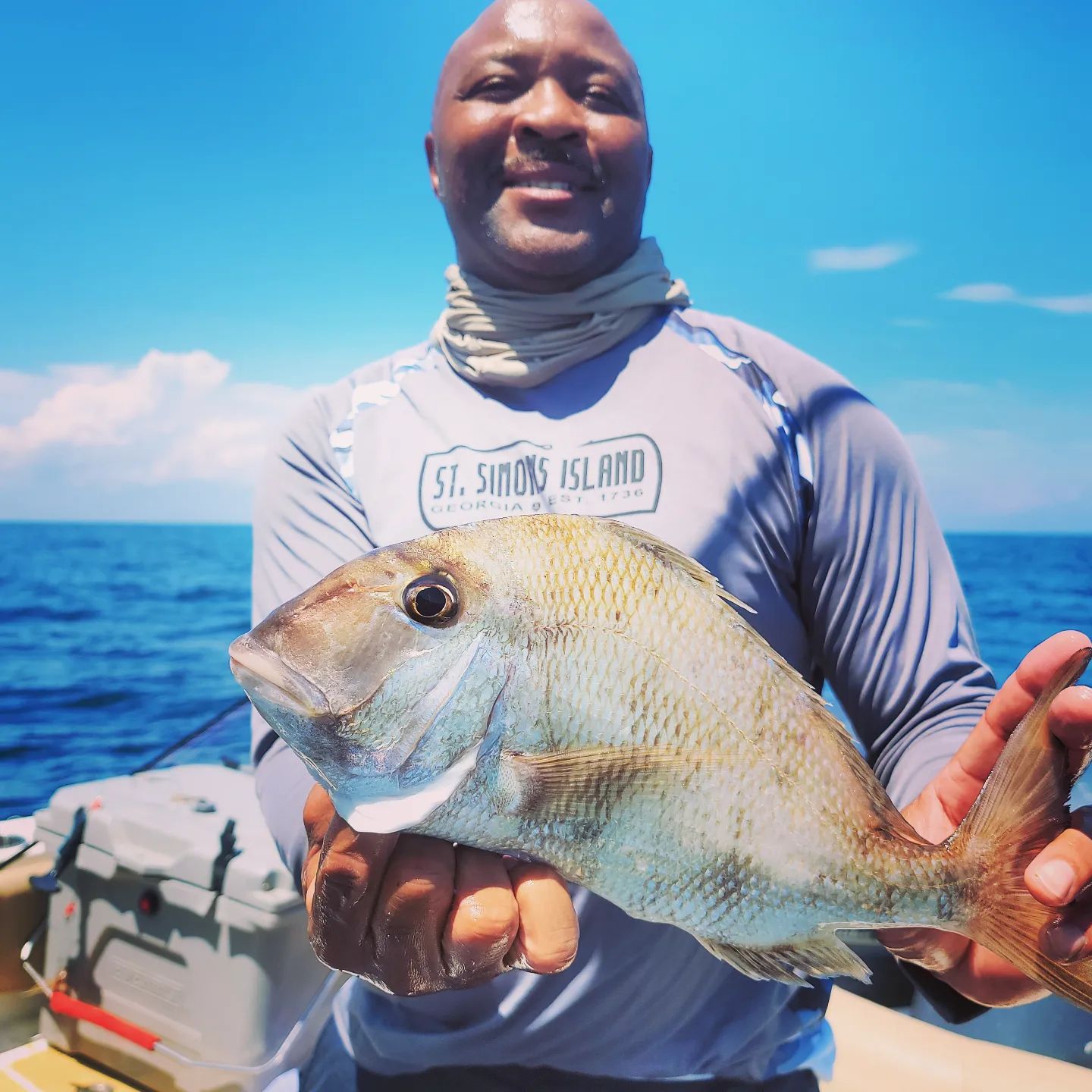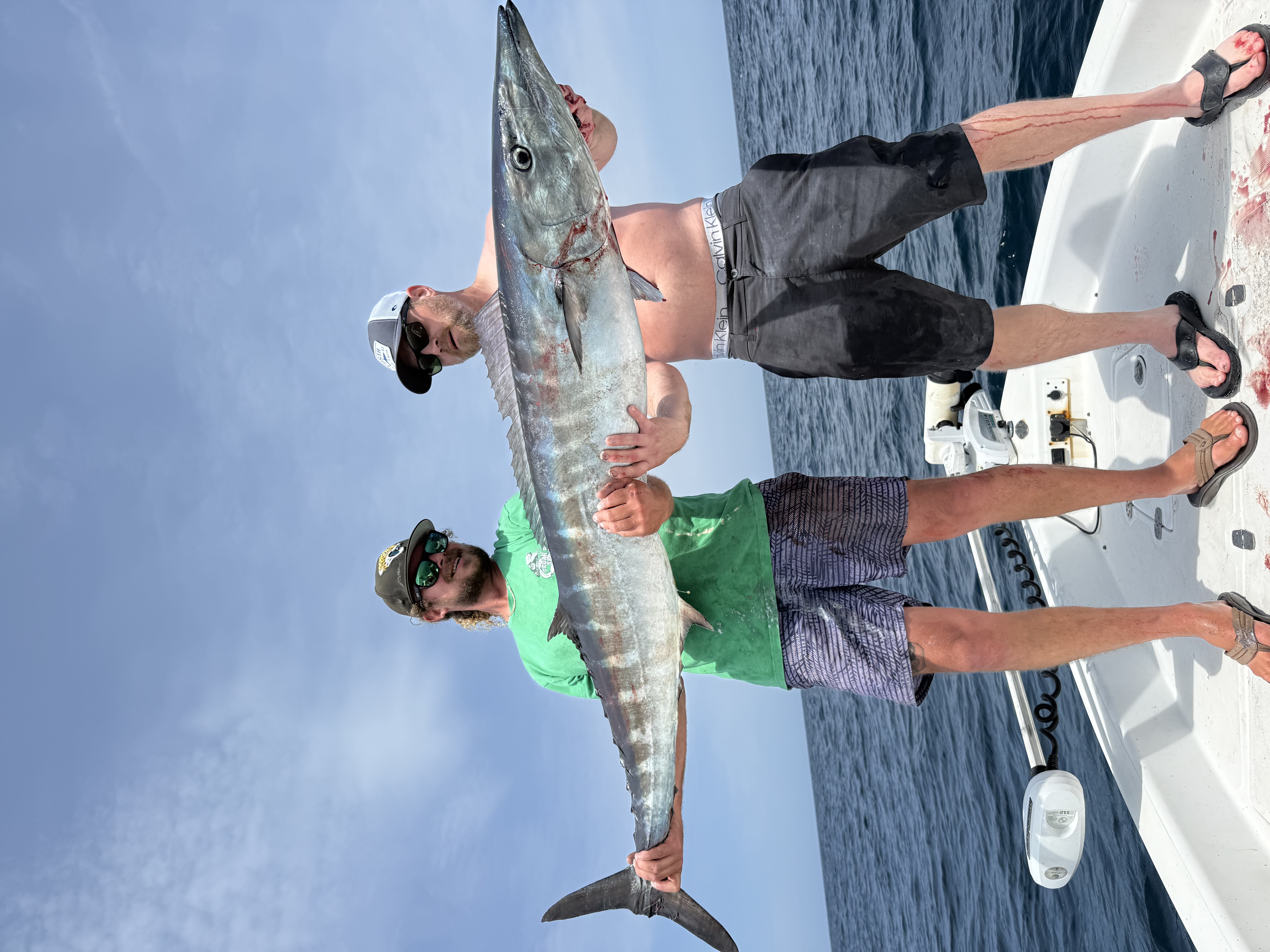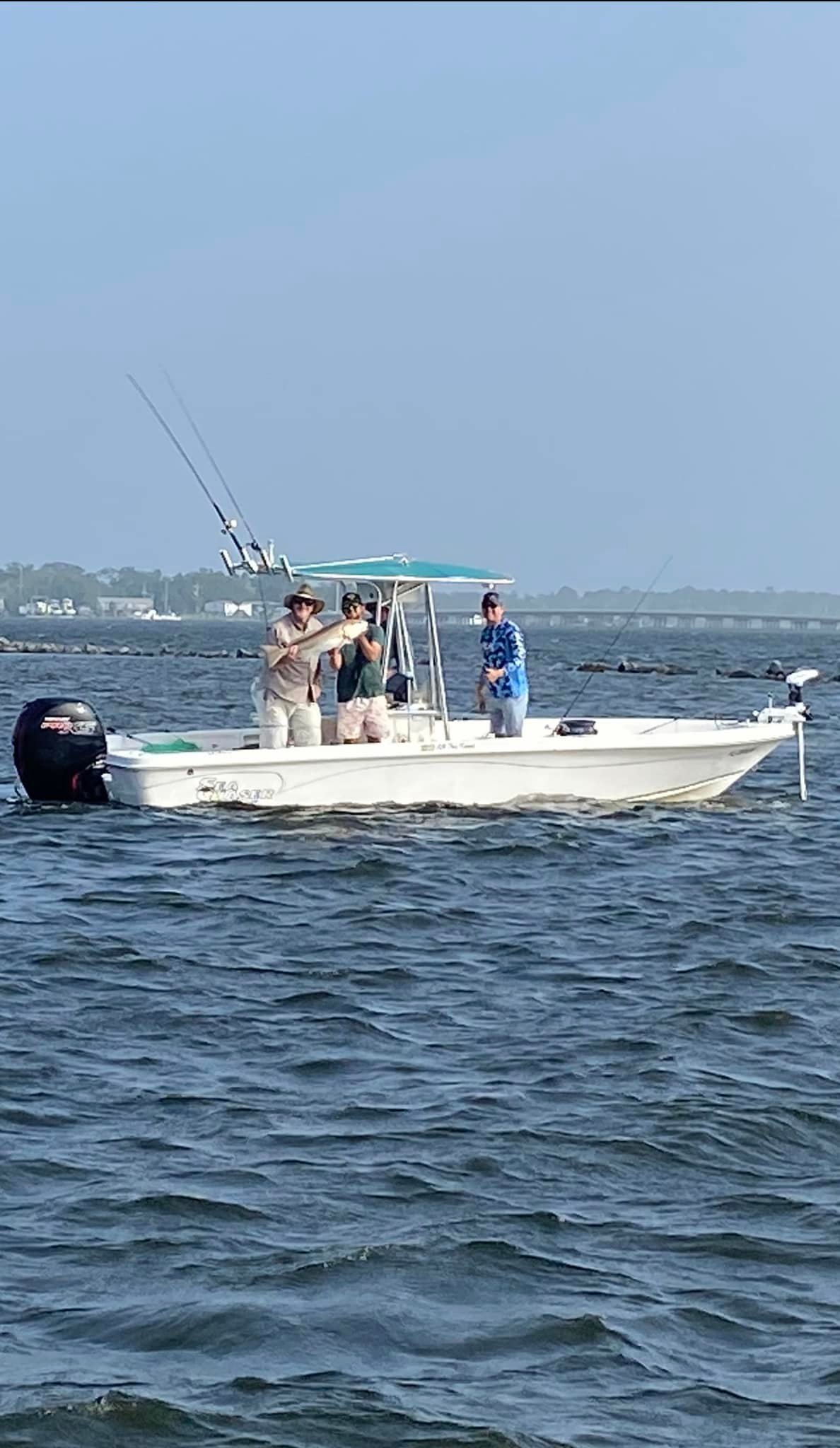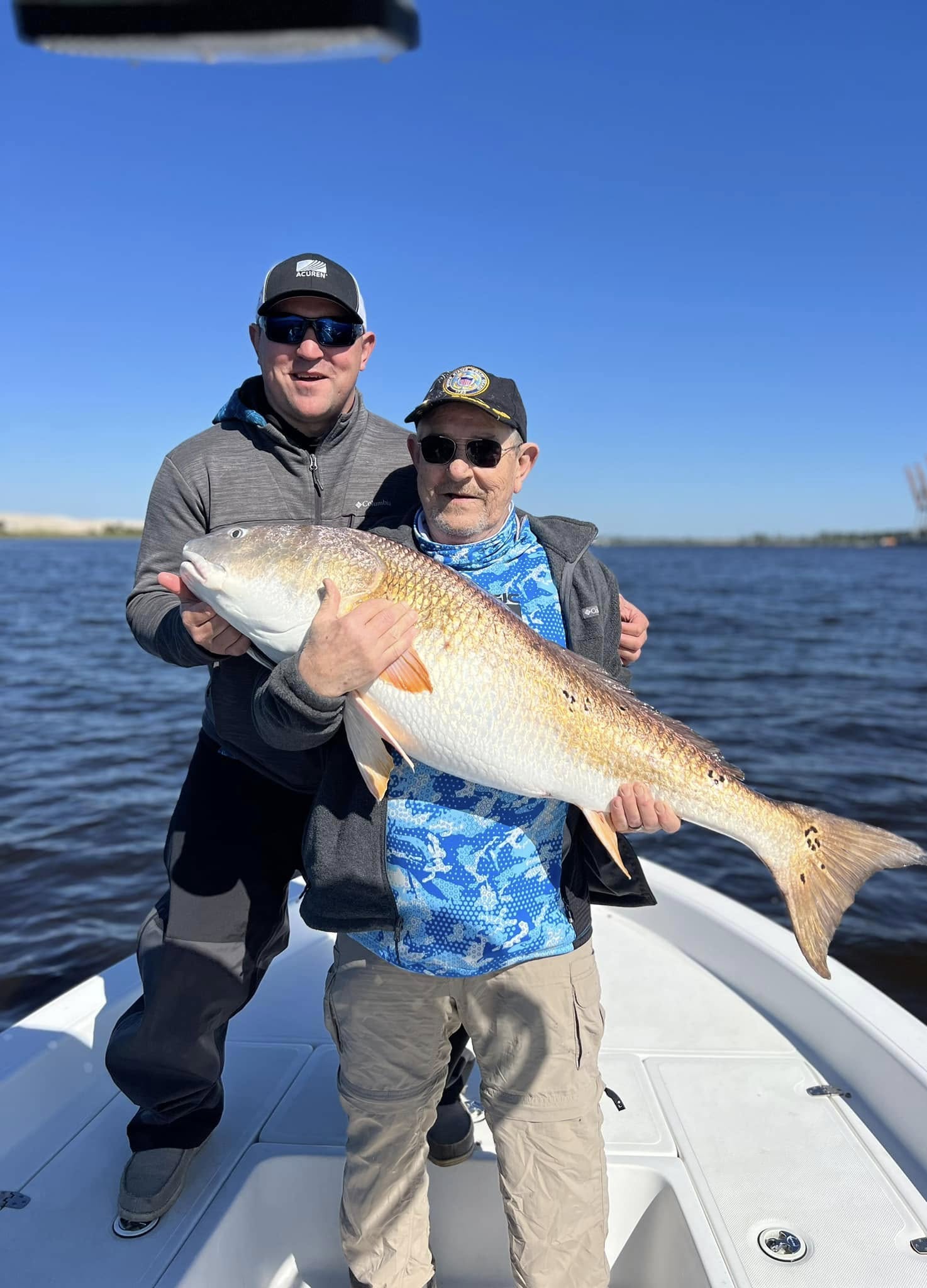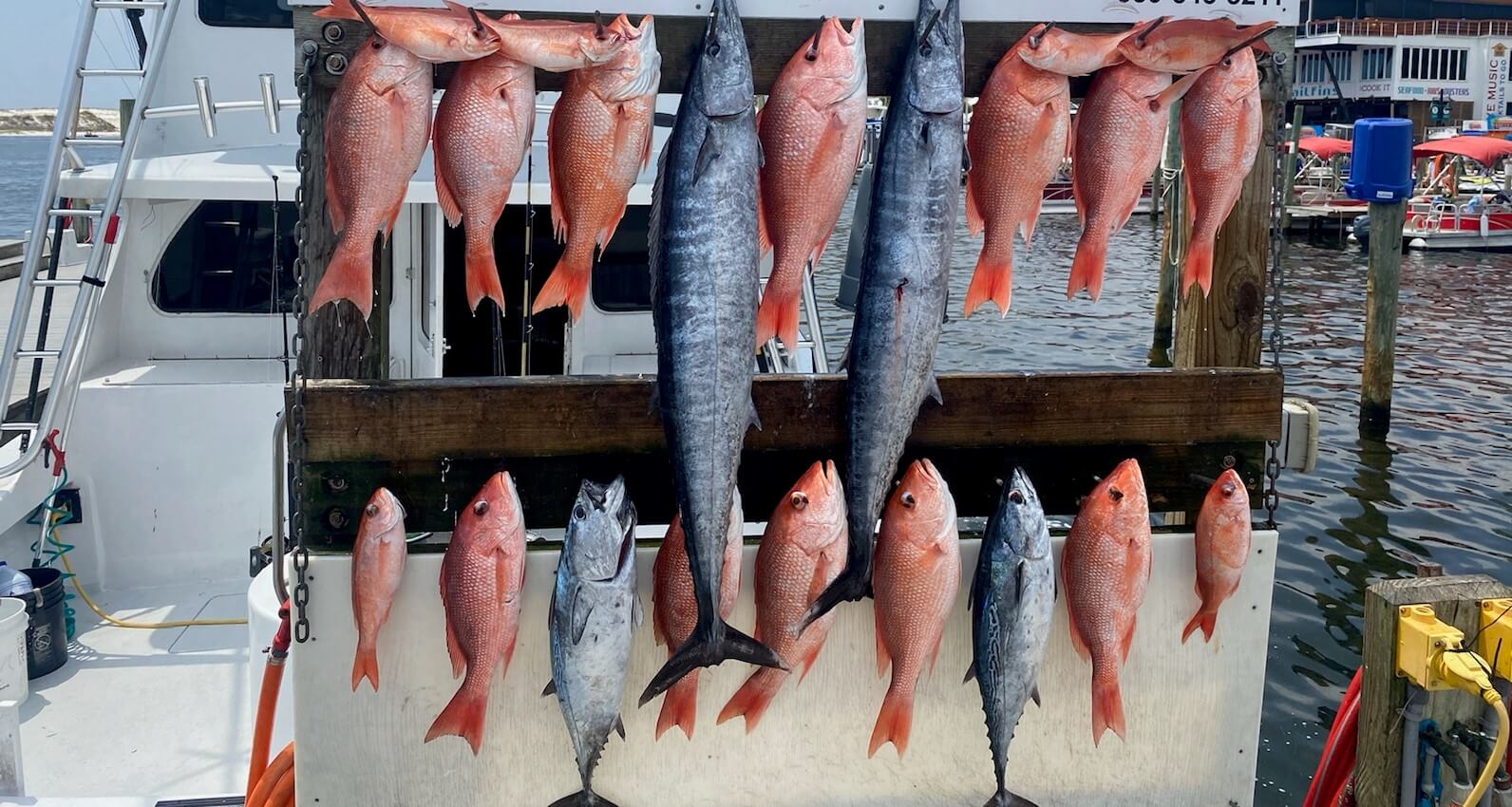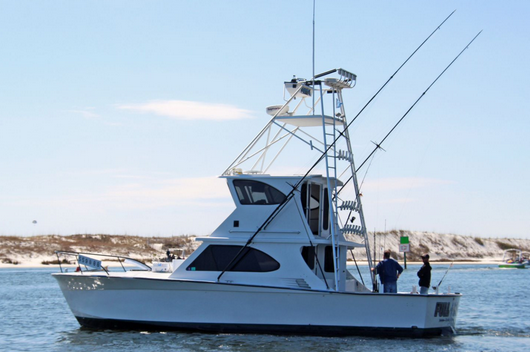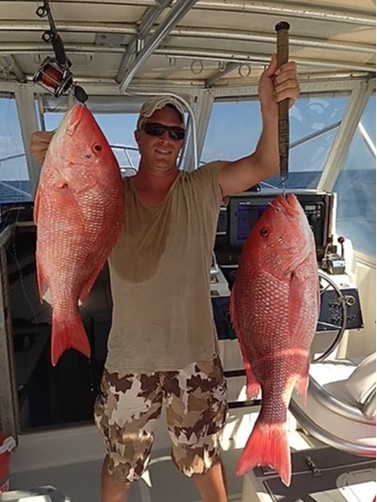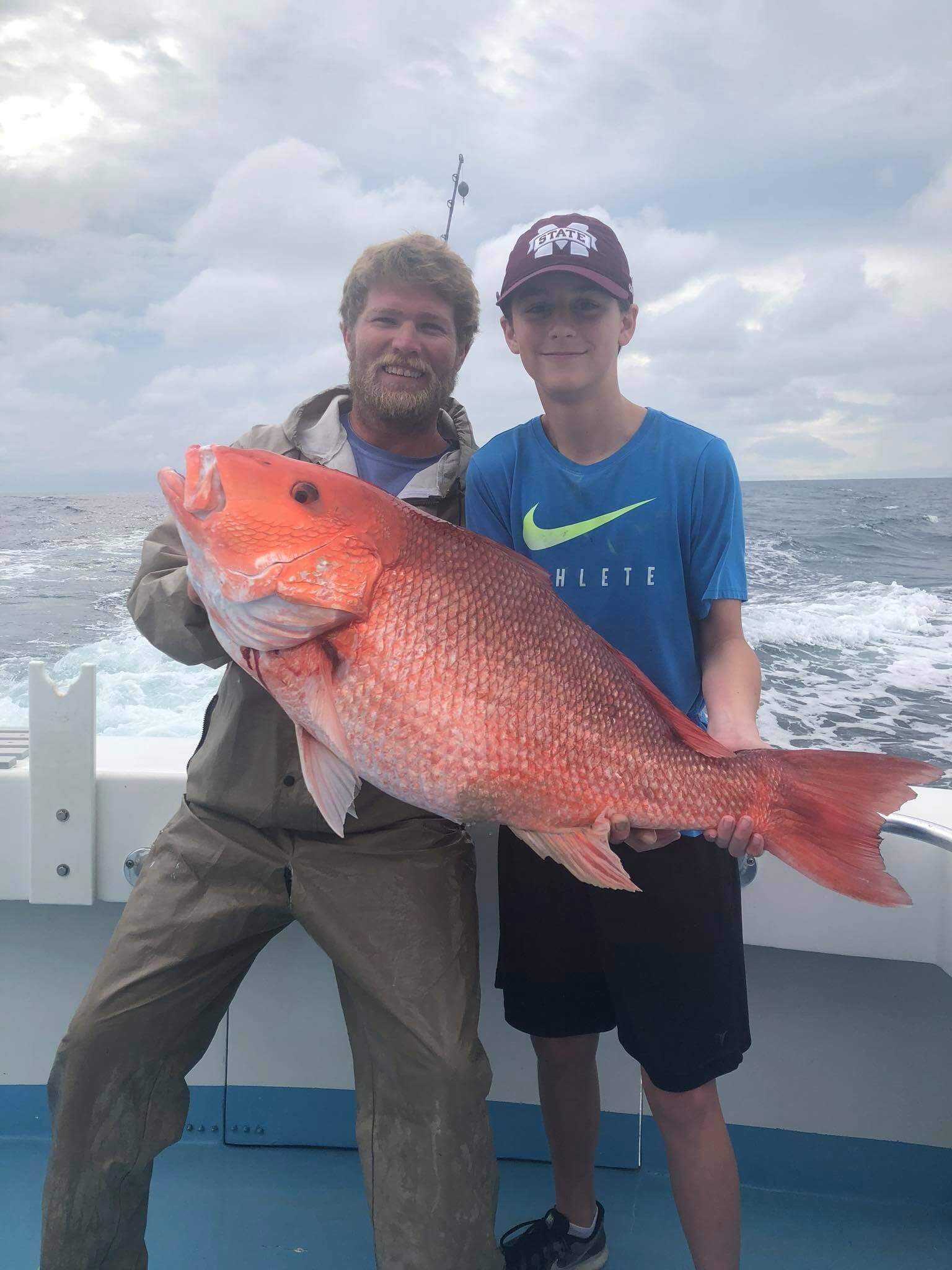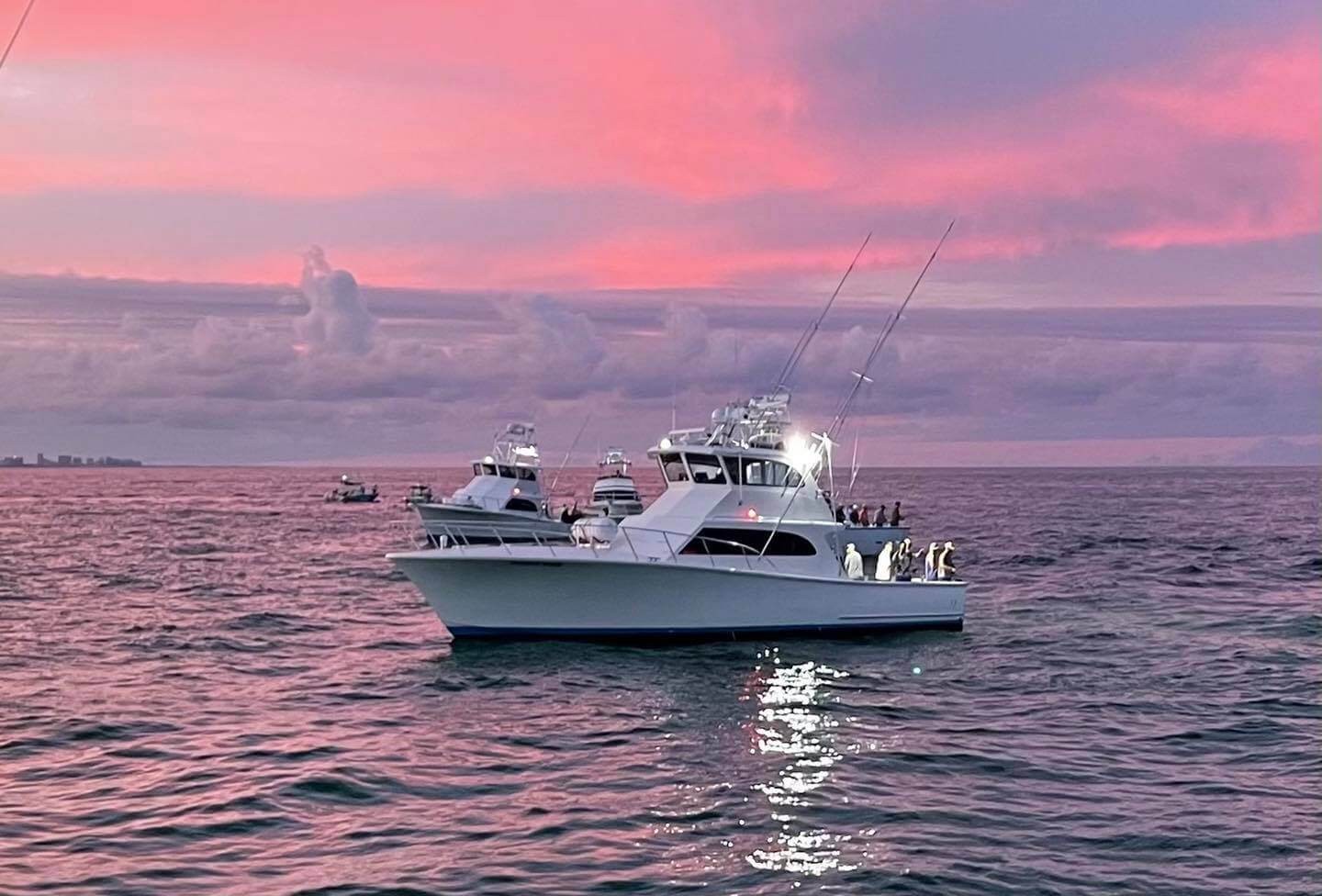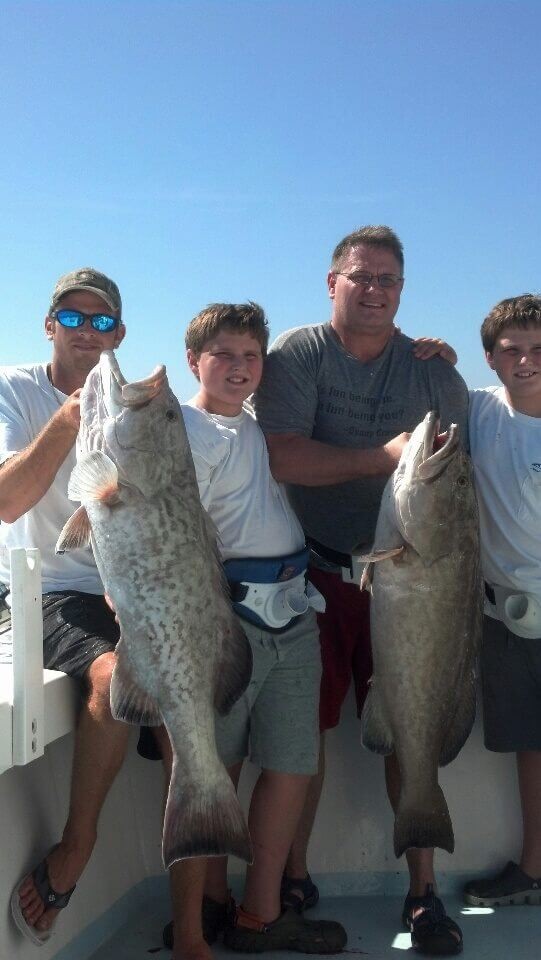Damn Good Guides
Experts Available 24/7
100% Weather Guarantee
Top Cities for Cobia Fishing
“Our Damn Good Guides go above and beyond, and we’ve handpicked every single one. We’re passionate about the outdoors and look forward to getting you out on the trip of a lifetime, every time.”
Jonathan and Attison | Co-founders | Austin, Texas
Cobia Fishing Charters
Inshore Fishing in Crystal River
Fishing And Scalloping Trip
Deep Sea Fishing in North Charleston
Reef & Bottom Fishing Trip
Inshore, Nearshore Fishing in Port Orange
Nearshore/Inshore Madness
Nearshore Fishing in Panama City
Offshore Panama Baby
Deep Sea Fishing in South Padre Island
1/2 Day Fishing Adventure
Snapper & Offshore - 32' Cat
Everything to Know About Booking a cobia fishing charter
What are the best cobia fishing charters?
The best cobia fishing charters are:
What is a Cobia?
A cobia is a unique fish - there are no other member of its scientific family left, and it is a fairly prehistoric-looking beast. It is a fish of many names (Texans prefer to call it a ling, and elsewhere around the world you might hear black kingfish, black salmon, lemonfish, black bonito, sergeantfish, cubby yew, crab-eater, or even the prodigal son).
To identify a cobia isn’t too difficult, as they have a massive, depressed head that looks almost flat like a catfish. They are also quickly told apart by their olive upper and white lower body, sometimes with a stripe down the side. These stripes are often more prominent during the spawn. They also have a few unique spikes on their back before their dorsal fin, and interestingly do not have a swim bladder like most other fish, meaning they must propel themselves to swim up or down in the water column.
Cobia are a popular gamefish; they’re strong-willed and fish hard on the line, and are known for keeping the fight alive even after being boated multiple times (don’t underestimate this fish). They are good to eat and are fished both commercially and recreationally.
How big do Cobia get?
The cobia can grow to pretty substantial sizes, and they can fill out to be rather hefty. They can grow to a maximum of about 80 inches and 175 pounds. The average adults are closer to 30 pounds.
Cobia live to be up to 12-15 years and males mature at 2 years while females mature at around 3, a relatively young age. Breeding generally takes place from April to September in large offshore congregations (earlier in the southeast and later in the Gulf of Mexico).
What's the biggest Cobia ever caught?
The largest cobia taken on rod and reel was caught in Shark Bay, Australia. It weighed 135 pounds and was caught in 1985. But this is by no means the largest cobia taken - that distinction belongs to spearfishermen in Brazil who brought in a massive 172 pound fish in 2014. The fish doesn’t technically count towards any records because two men both speared the fish in order to bring it in, but this catch is impressive nonetheless. The official spearfishing record for cobia is a 142 pound fish, still greater than rod and reel.
Where is the best place to catch Cobia?
Cobia are a pelagic fish and prefer the open sea but are often found cruising elsewhere, including any buoys or flotsam. They will often cozy on up to your boat to check out whats going on and search for crustaceans and small fish. There are also cobia who live inshore in bays and mangroves mostly in pursuit of prey.
Cobia are usually solitary but can be seen in small schools, especially in Florida where they are particularly common. They live all over the world in warm-temperate waters and are very widespread. You can find cobia from Canada to Argentina, from Morocco to South Africa, and from Japan to Australia. The only place you really won’t find cobia are the Eastern Pacific.
When should I catch Cobia?
In Florida, cobia are particularly plentiful. Atlantic coast cobia will hang around near the Keys in the winter months before they move back North. Therefore the Mid-Atlantic states will get the most action in the summer months. In the Gulf fish are around most of the year, but are best spring to summer.
A good rule of thumb is that on the Atlantic side fish will reach North Carolina and the Chesapeake Bay by May, and on the Gulf side will reach Destin by April.
In the US the season is always open. There is a 33 inch minimum for Florida and a 37 inch minimum for Texas and Virginia. In Florida and Virginia the bag limit is 1 per person and in all other states it is 2.
How do you catch Cobia?
When migrating, these fish swim close to the surface and sight casting is the name of the game. They are often seen migrating with rays, and some anglers even use ray’s wings as an indicator that cobia might be nearby. Otherwise, you can catch them trolling, bottom fishing, or jigging.
Cobia are strong, aggressive predators who mainly feed on crustaceans, fish, and squid. They are attracted to many jigs and are curious by nature, so it is good to use colors and get them excited with sound and movement. They will also eat a wide variety of live bait, but are especially interested in crabs (remember, one of their nicknames above is crabeater).
If casting, try to land the bait close to the fish and past its nose, and then run it by their head. If done correctly, cobia should lunge at just about anything that looks appetizing enough to get their attention. The fish will then take off, and once you are able, bring the fish to the boat and work quick so it doesn’t take your line again!
Are Cobia good to eat? What are the best Cobia recipes?
Cobia’s firm, white meat is considered excellent table fare. It has a rich taste and can be buttery but with a low amount of fat an oil. They are good cooked just about any style. They can be high in mercury like other pelagic fish so they are best in moderation.
Recent Reviews
Cities
- Anna Maria, FL
- Apollo Beach, FL
- Aransas Pass, TX
- Atlantic Beach, FL
- Atlantic Beach, NC
- Bay Pines, FL
- Beaufort, NC
- Belleair Bluffs, FL
- Big Pine Key, FL
- Biloxi, MS
- Boca Grande, FL
- Bokeelia, FL
- Boynton Beach, FL
- Bradenton, FL
- Bradenton Beach, FL
- Brick Township, NJ
- Brunswick, GA
- Buxton, NC
- Cape Canaveral, FL
- Cape Coral, FL
- Captiva, FL
- Carolina Beach, NC
- Carrabelle, FL
- Cedar Key, FL
- Charleston, SC
- Chincoteague, VA
- Clearwater, FL
- Corpus Christi, TX
- Crawfordville, FL
- Crystal River, FL
- Cypremort Point, LA
- D'Iberville, MS
- Dauphin Island, AL
- Destin, FL
- Dickinson, TX
- Edgewater, FL
- Everglades City, FL
- Fernandina Beach, FL
- Folly Beach, SC
- Fort Lauderdale, FL
- Fort Morgan, AL
- Fort Myers, FL
- Fort Myers Beach, FL
- Fort Pierce, FL
- Fort Walton Beach, FL
- Freeport, TX
- Freeport, NY
- Frisco, NC
- Galveston, TX
- Gautier, MS
- Golden Meadow, LA
- Goodland, FL
- Gulf Breeze, FL
- Gulf Shores, AL
- Gulfport, MS
- Hampstead, NC
- Hampton, VA
- Harkers Island, NC
- Hatteras, NC
- Hernando Beach, FL
- Hilton Head Island, SC
- Hitchcock, TX
- Hollywood, FL
- Holmes Beach, FL
- Homestead, FL
- Howard Beach, NY
- Hudson, FL
- Indian Rocks Beach, FL
- Islamorada, FL
- Jacksonville, FL
- Jensen Beach, FL
- Jerome, FL
- Johns Island, SC
- Jupiter, FL
- Key Biscayne, FL
- Key Largo, FL
- Key West, FL
- Lantana, FL
- Largo, FL
- Little River, SC
- Little Torch Key, FL
- Manteo, NC
- Marathon, FL
- Marco Island, FL
- Melbourne, FL
- Miami, FL
- Miami Beach, FL
- Morehead City, NC
- Mount Pleasant, SC
- Murrells Inlet, SC
- Myrtle Beach, SC
- Naples, FL
- Naval Air Station Key West, FL
- New Smyrna Beach, FL
- Newport, NC
- Niceville, FL
- Nokomis, FL
- Norfolk, VA
- North Charleston, SC
- North Miami, FL
- Oak Island, NC
- Ocean City, MD
- Ochopee, FL
- Orange Beach, AL
- Palmetto, FL
- Panama City, FL
- Panama City Beach, FL
- Pensacola, FL
- Pensacola Beach, FL
- Placencia, Stann Creek District, Belize
- Placida, FL
- Playa del Carmen, Mexico
- Pompano Beach, FL
- Port Aransas, TX
- Port Arthur, TX
- Port Canaveral, FL
- Port Isabel, TX
- Port Mansfield, TX
- Port O'Connor, TX
- Port Orange, FL
- Port Royal, SC
- Punta Gorda, FL
- Ramrod Key, FL
- Redington Shores, FL
- Reedville, VA
- Riverview, FL
- Riviera Beach, FL
- Ruskin, FL
- Saint Bernard, LA
- Saint George Island, FL
- Saint James City, FL
- Saluda, VA
- Santa Rosa Beach, FL
- Sarasota, FL
- Sardinal, Costa Rica
- Savannah, GA
- Sebastian, FL
- Shalimar, FL
- Somers Point, NJ
- South Padre Island, TX
- Spring Hill, FL
- St. Augustine, FL
- St. Marys, GA
- St. Petersburg, FL
- Steinhatchee, FL
- Stock Island, FL
- Stone Harbor, NJ
- Stuart, FL
- Tampa, FL
- Tarpon Springs, FL
- Tavernier, FL
- Tierra Verde, FL
- Treasure Island, FL
- Venice, LA
- Venice, FL
- Vero Beach, FL
- Virginia Beach, VA
- Wanchese, NC
- West Palm Beach, FL
- Wilmington, NC
- Wrightsville Beach, NC
- Yankeetown, FL
Countries
Other Fishing Species
- African Pompano
- Albacore Tuna
- Alligator Gar
- Almaco Jack
- Amberjack
- Atlantic Mackerel
- Barracuda
- Bigeye Tuna
- Black Drum
- Black Grouper
- Black Marlin
- Black Seabass
- Blackbelly Rosefish
- Blackfin Tuna
- Blacktip Shark
- Blue Catfish
- Blue Marlin
- Blue Shark
- Bluefin Tuna
- Bluefish
- Bonefish
- Bonito
- Bonnethead Shark
- Bowfin
- Broomtail Grouper
- Bull Shark
- Bullhead Catfish
- Cero Mackerel
- Clam
- Cubera Snapper
- Dusky Shark
- False Albacore
- Florida Pompano
- Flounder
- Fluke
- Freshwater Drum
- Gag Grouper
- Goliath Grouper
- Great White Shark
- Grunt
- Hammerhead Shark
- Hardhead Catfish
- Hogfish
- Horse-eye Jack
- Jack Crevalle
- Kingfish
- Ladyfish
- Lane Snapper
- Lemon Shark
- Leopard Shark
- Lionfish
- Lobster
- Longnose Gar
- Mahi Mahi
- Mako Shark
- Mangrove Snapper
- Mullet Snapper
- Mutton Snapper
- Nurse Shark
- Permit
- Queen Snapper
- Rainbow Runner
- Ray
- Red Grouper
- Red Snapper
- Redfish
- Roosterfish
- Sailfish
- Sandbar Shark
- Scallop
- Scamp Grouper
- Scup
- Sheepshead
- Skate
- Skipjack Tuna
- Snook
- Snowy Grouper
- Spadefish
- Spanish Mackerel
- Speckled Trout
- Spinner Shark
- Stingray
- Strawberry Grouper
- Striped Bass
- Striped Marlin
- Swordfish
- Tarpon
- Tautog
- Thresher Shark
- Tiger Shark
- Tilapia
- Tilefish
- Triggerfish
- Tripletail
- Vermillion Snapper
- Wahoo
- Warsaw Grouper
- Weakfish
- White Marlin
- Whiting
- Yellowfin Tuna
- Yellowtail Amberjack
- Yellowtail Snapper
Tour Species
Featured Cities
- Fishing Charters Near Me
- Austin Fishing Guides
- Biloxi Fishing Charters
- Bradenton Fishing Charters
- Cabo San Lucas Fishing Charters
- Cancun Fishing Charters
- Cape Coral Fishing Charters
- Charleston Fishing Charters
- Clearwater Fishing Charters
- Corpus Christi Fishing Charters
- Crystal River Fishing Charters
- Dauphin Island Fishing Charters
- Daytona Beach Fishing Charters
- Destin Fishing Charters
- Fort Lauderdale Fishing Charters
- Fort Myers Fishing Charters
- Fort Walton Beach Fishing Charters
- Galveston Fishing Charters
- Gulf Shores Fishing Charters
- Hatteras Fishing Charters
- Hilton Head Fishing Charters
- Islamorada Fishing Charters
- Jacksonville Fishing Charters
- Jupiter Fishing Charters
- Key Largo Fishing Charters
- Key West Fishing Charters
- Kona Fishing Charters
- Lakeside Marblehead Fishing Charters
- Marathon Fishing Charters
- Marco Island Fishing Charters
- Miami Fishing Charters
- Montauk Fishing Charters
- Morehead City Fishing Charters
- Naples Fishing Charters
- New Orleans Fishing Charters
- New Smyrna Beach Fishing Charters
- Ocean City Fishing Charters
- Orange Beach Fishing Charters
- Panama City Beach Fishing Charters
- Pensacola Fishing Charters
- Pompano Beach Fishing Charters
- Port Aransas Fishing Charters
- Port Orange Fishing Charters
- Rockport Fishing Charters
- San Diego Fishing Charters
- San Juan Fishing Charters
- Sarasota Fishing Charters
- South Padre Island Fishing Charters
- St. Augustine Fishing Charters
- St. Petersburg Fishing Charters
- Tampa Fishing Charters
- Tarpon Springs Fishing Charters
- Venice Fishing Charters
- Virginia Beach Fishing Charters
- West Palm Beach Fishing Charters
- Wilmington Fishing Charters
- Wrightsville Beach Fishing Charters
What's biting?
View Cobia Fishing Reports from our damn good guides.
Didn't Find What You Were Looking For?
Our guides are Damn Good Guides, which means they’re vetted by our team of outdoor experts who know them on a first-name basis. We hand pick each and every one of them, and our network spans all across the US and beyond.
The proof is in the pudding, and we’re incredibly proud of our 4.9 / 5 average review score. Hit the button below to see more trip options:
